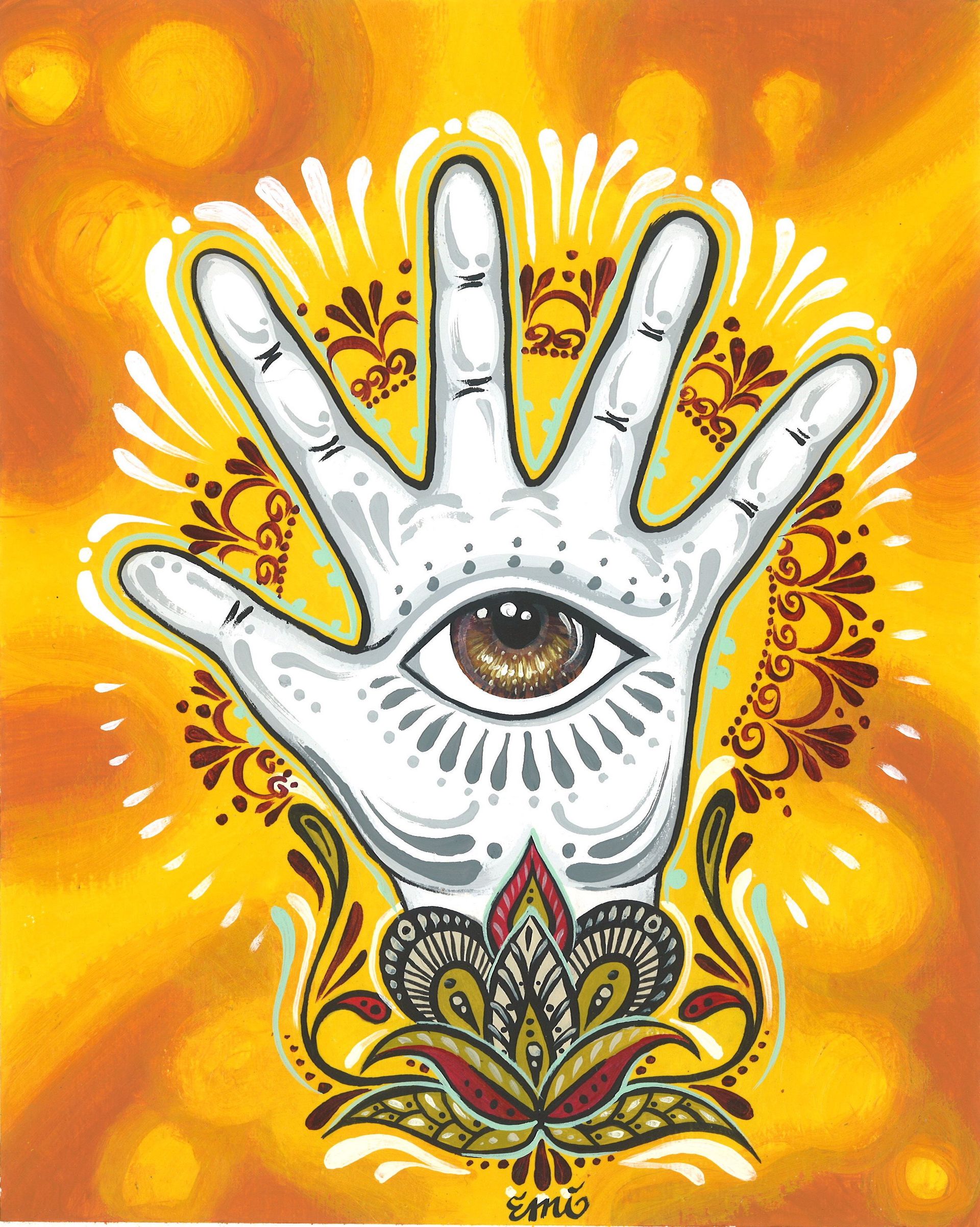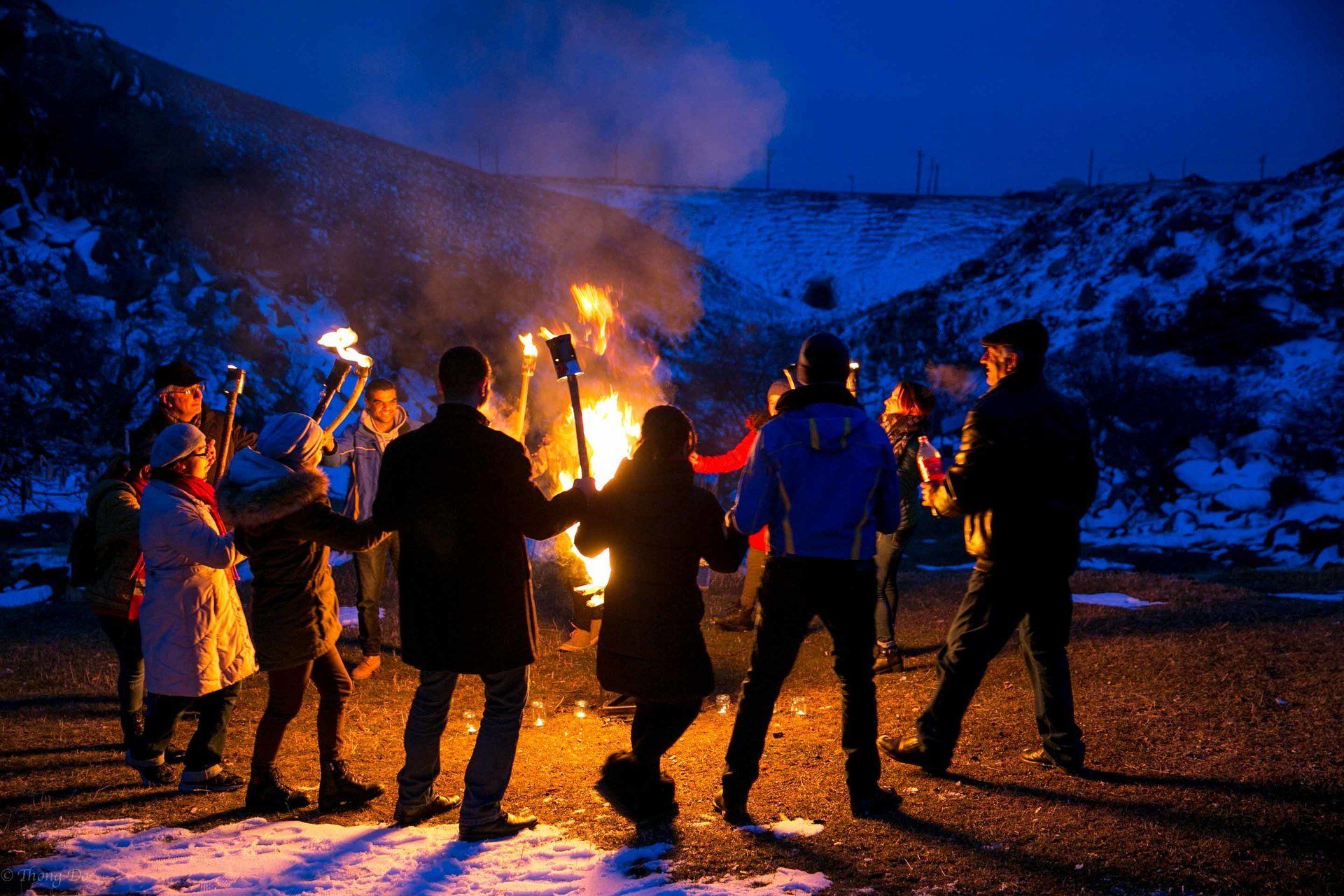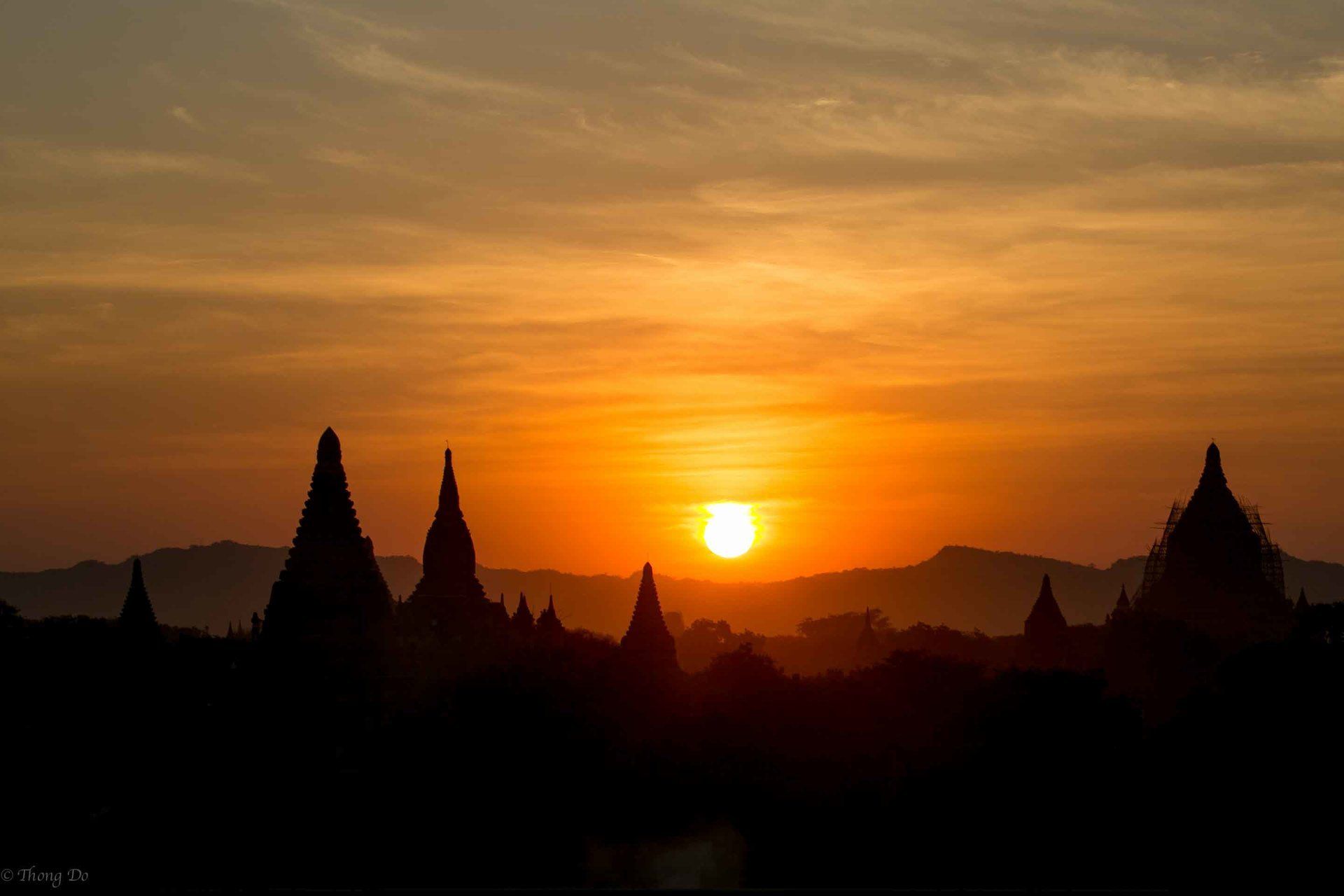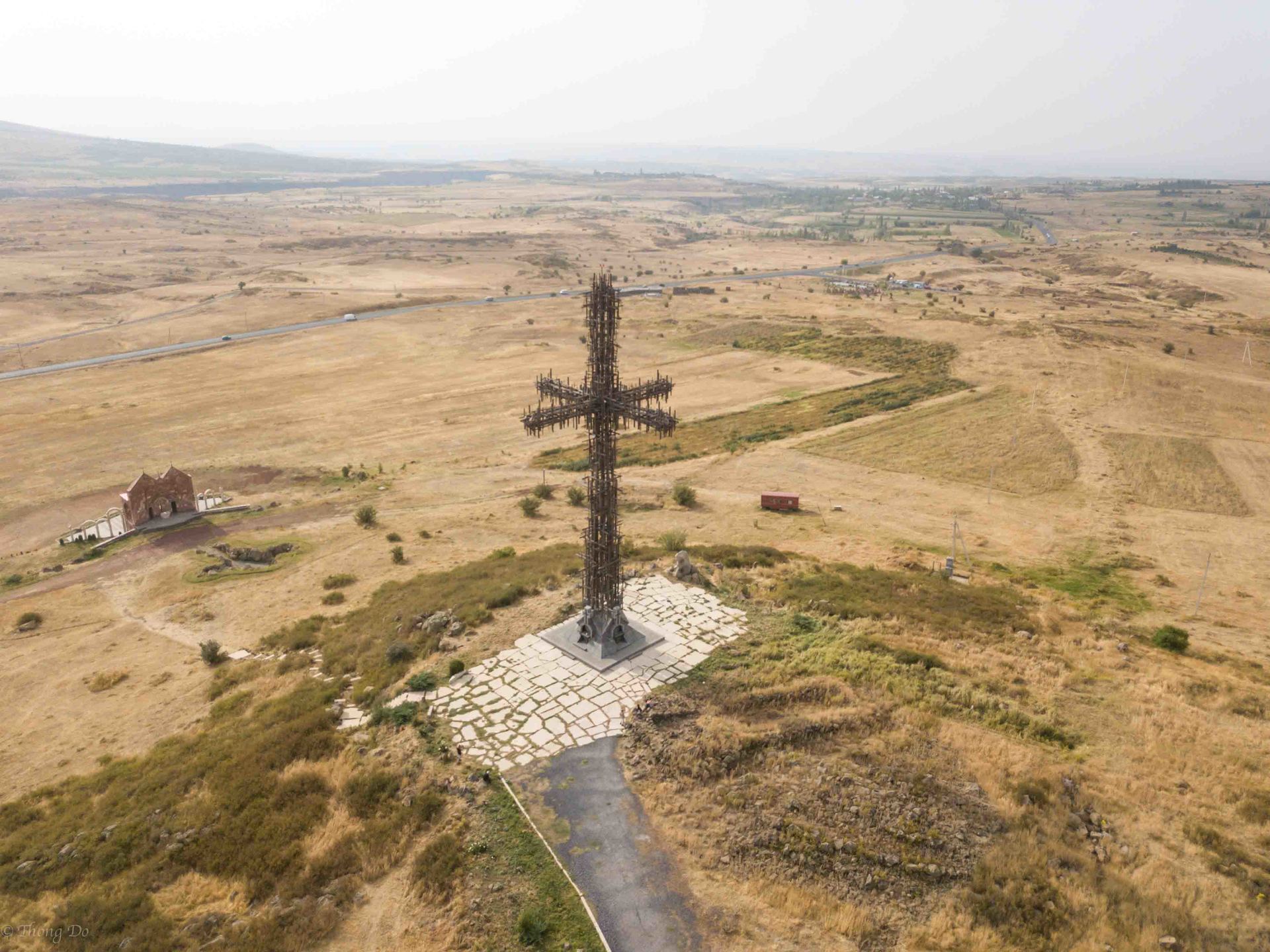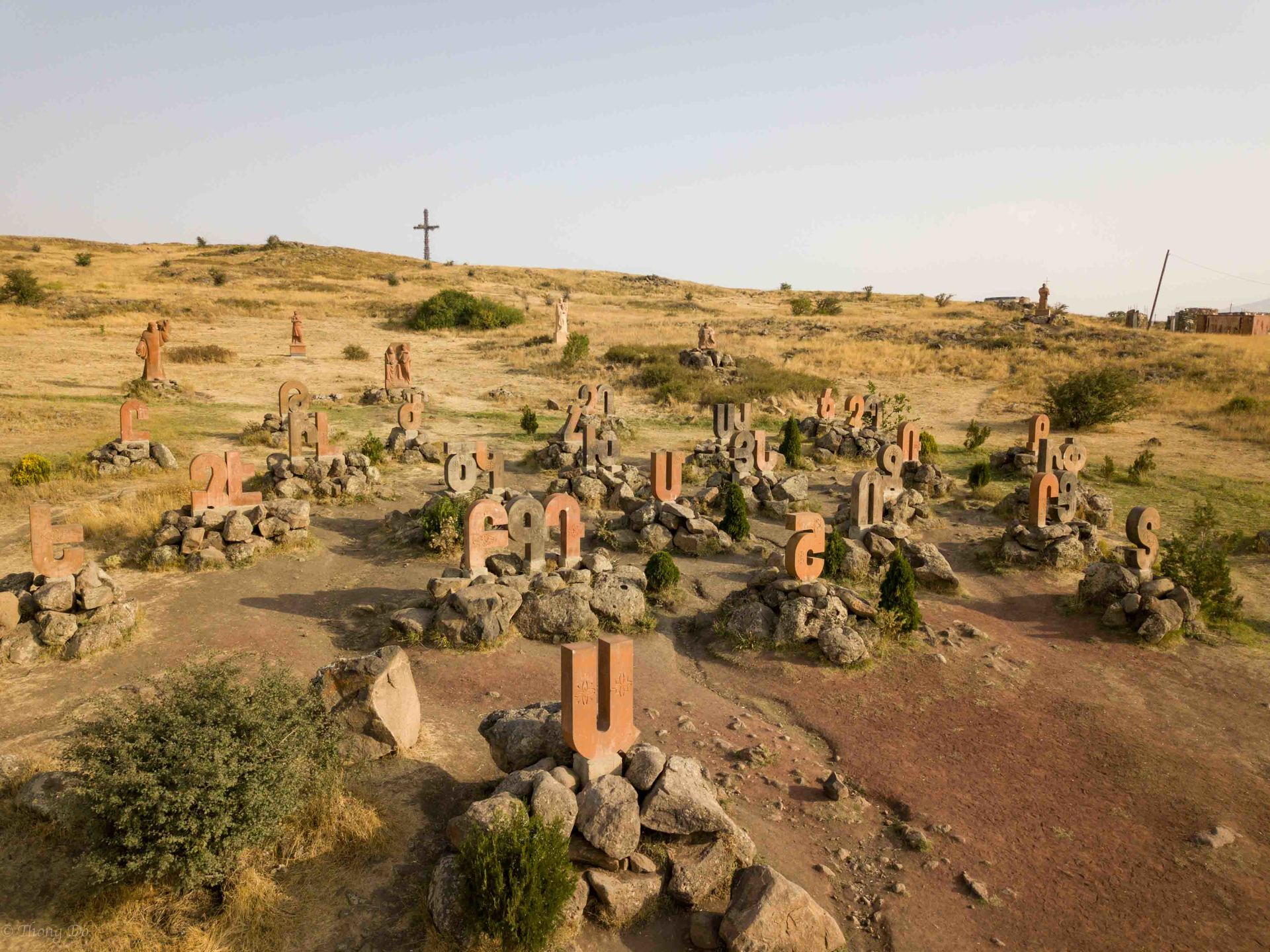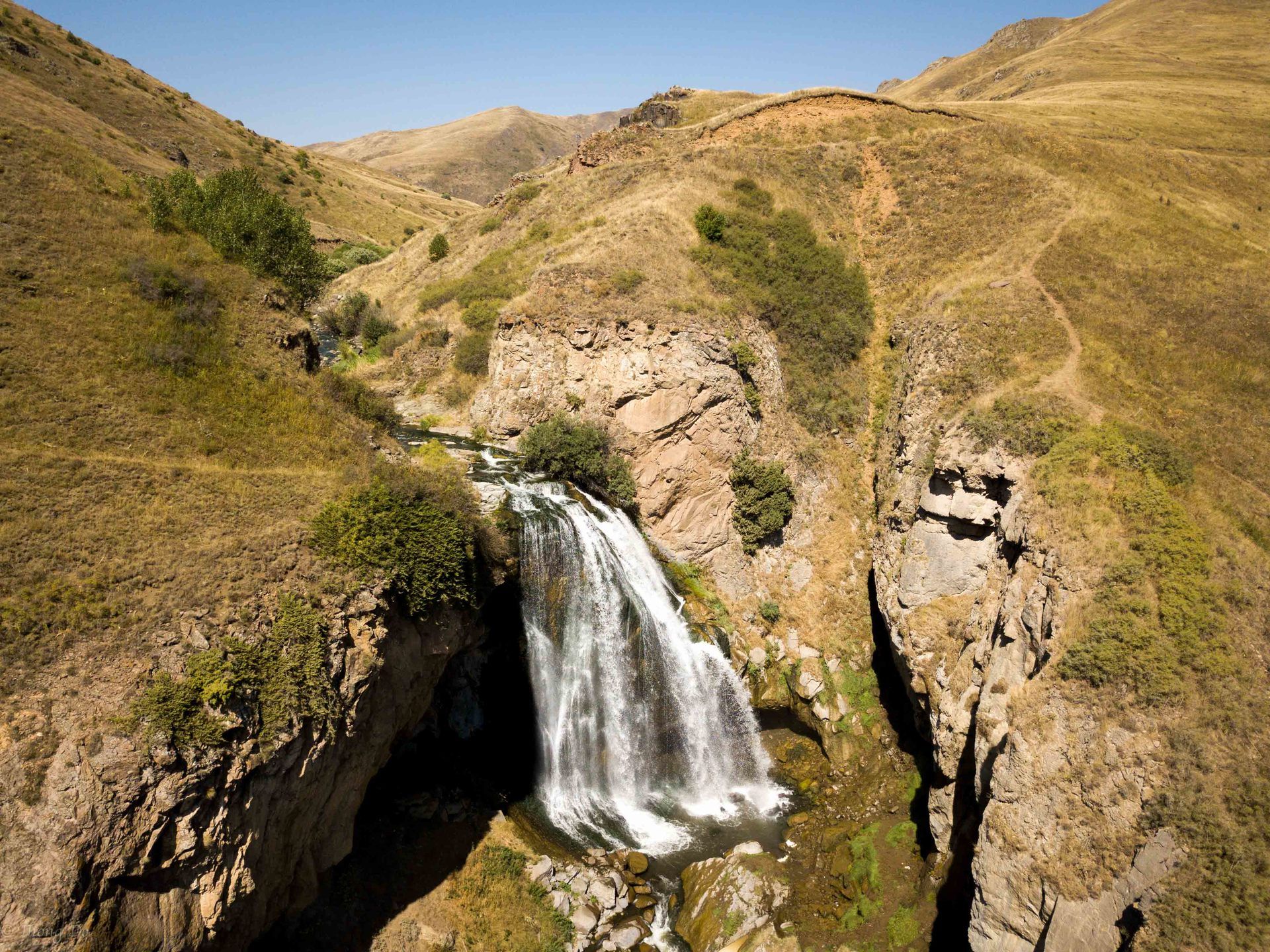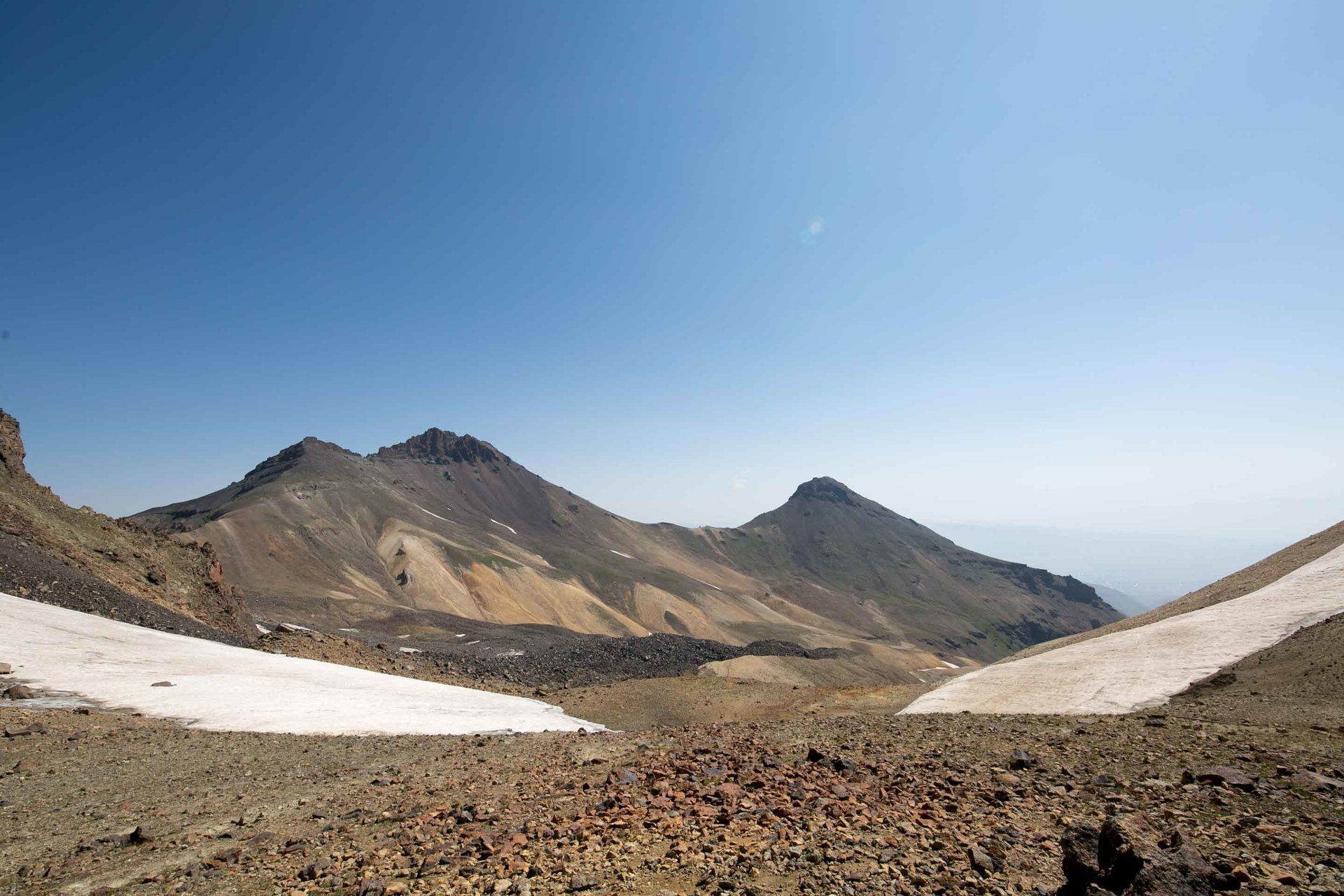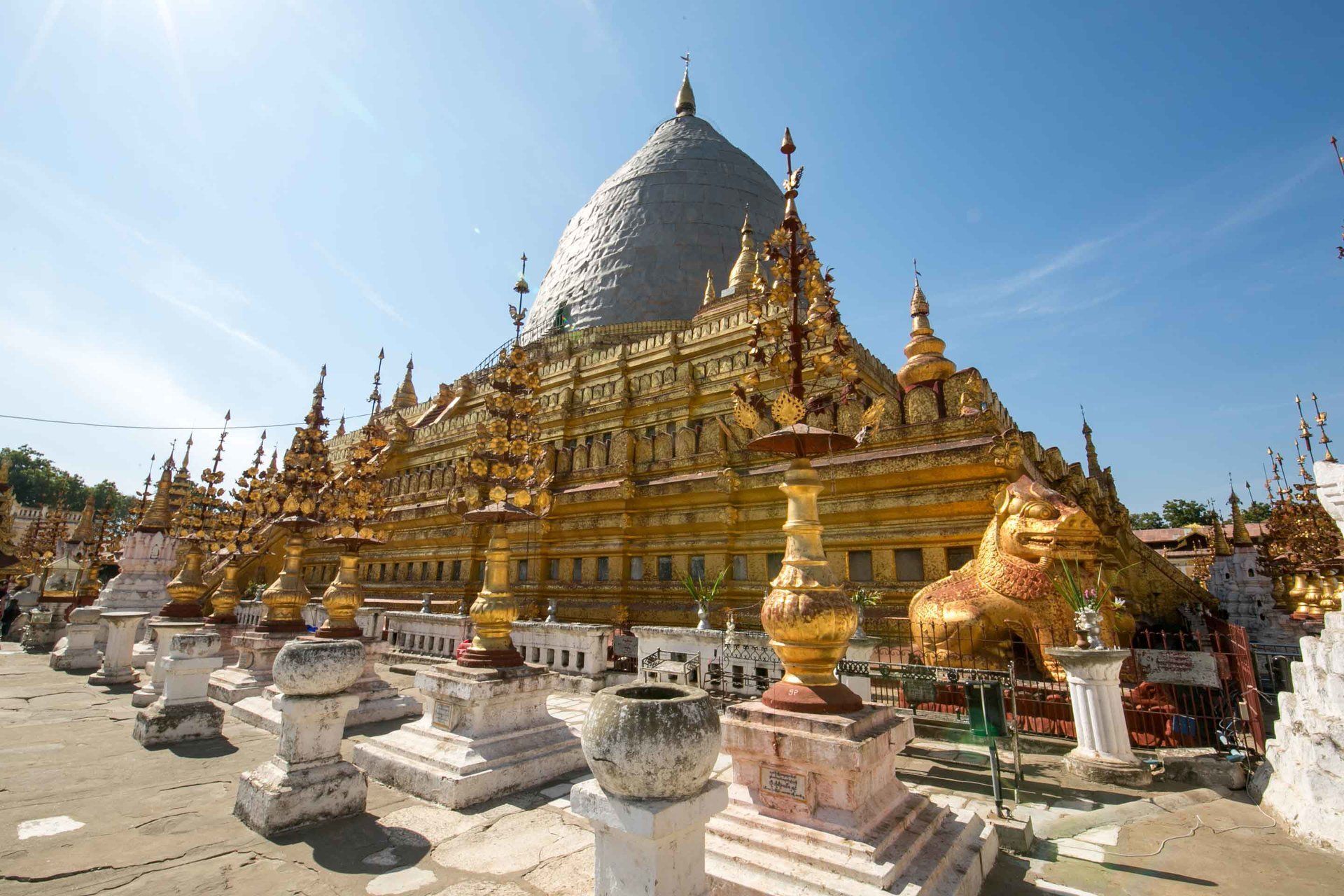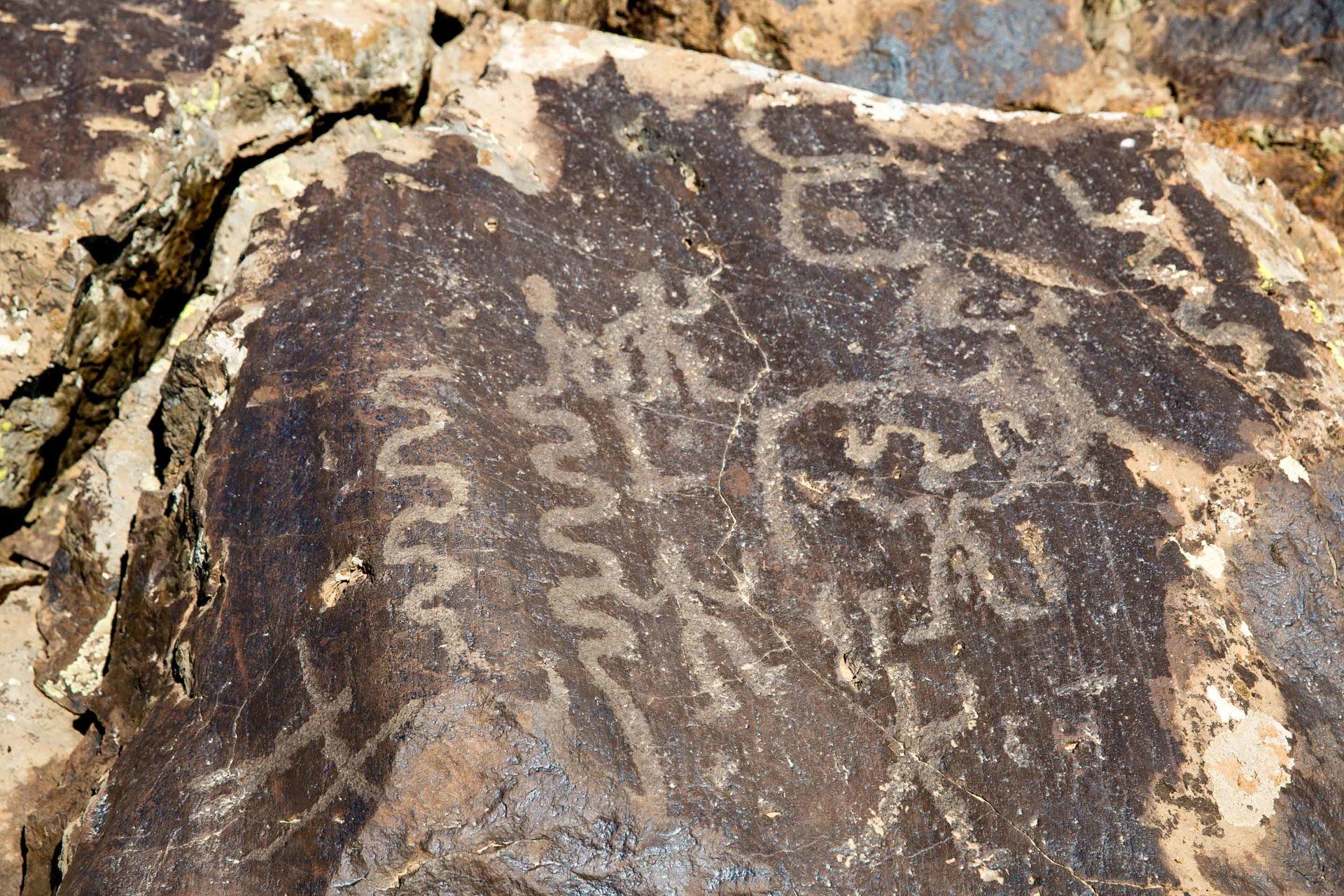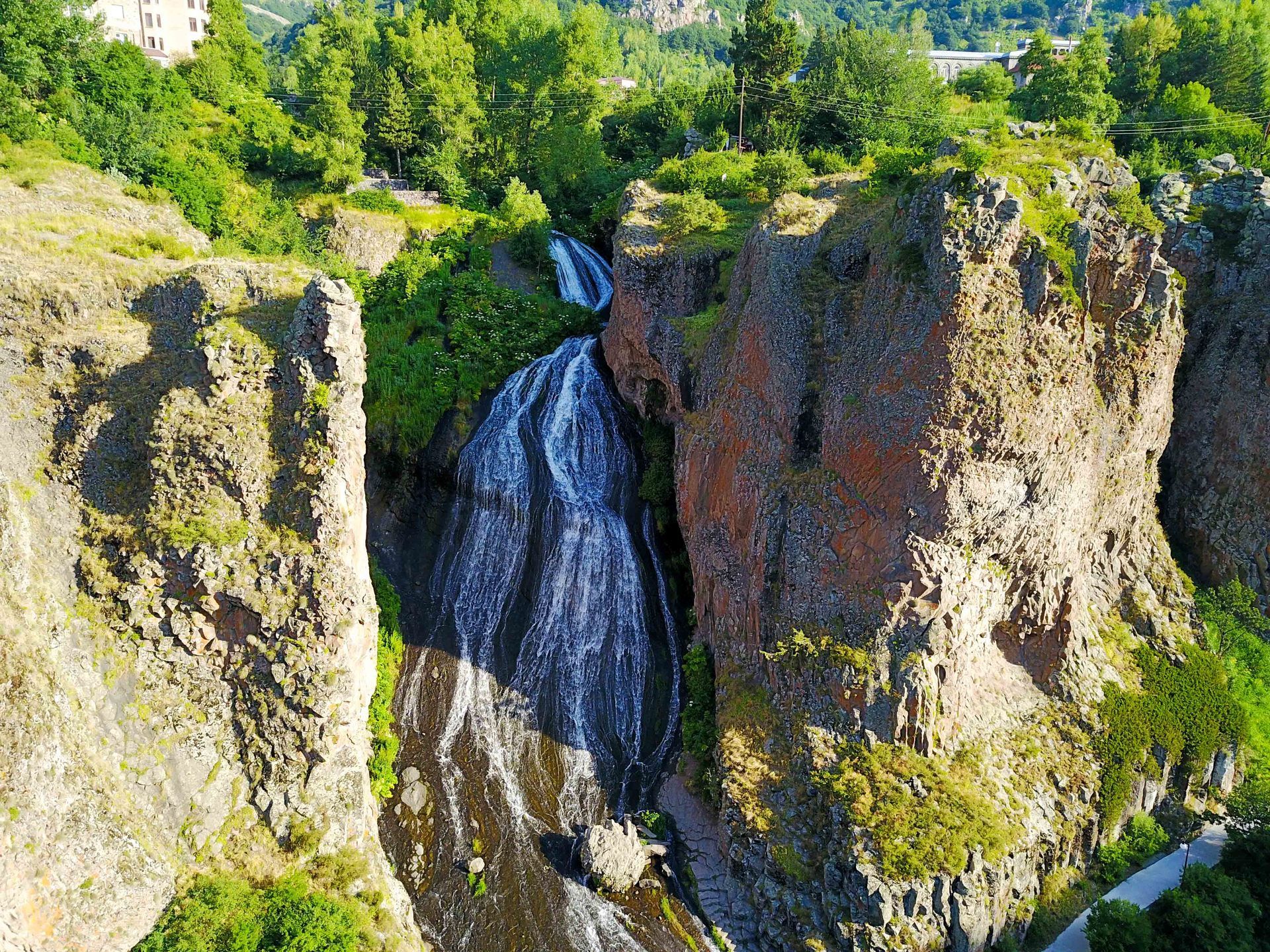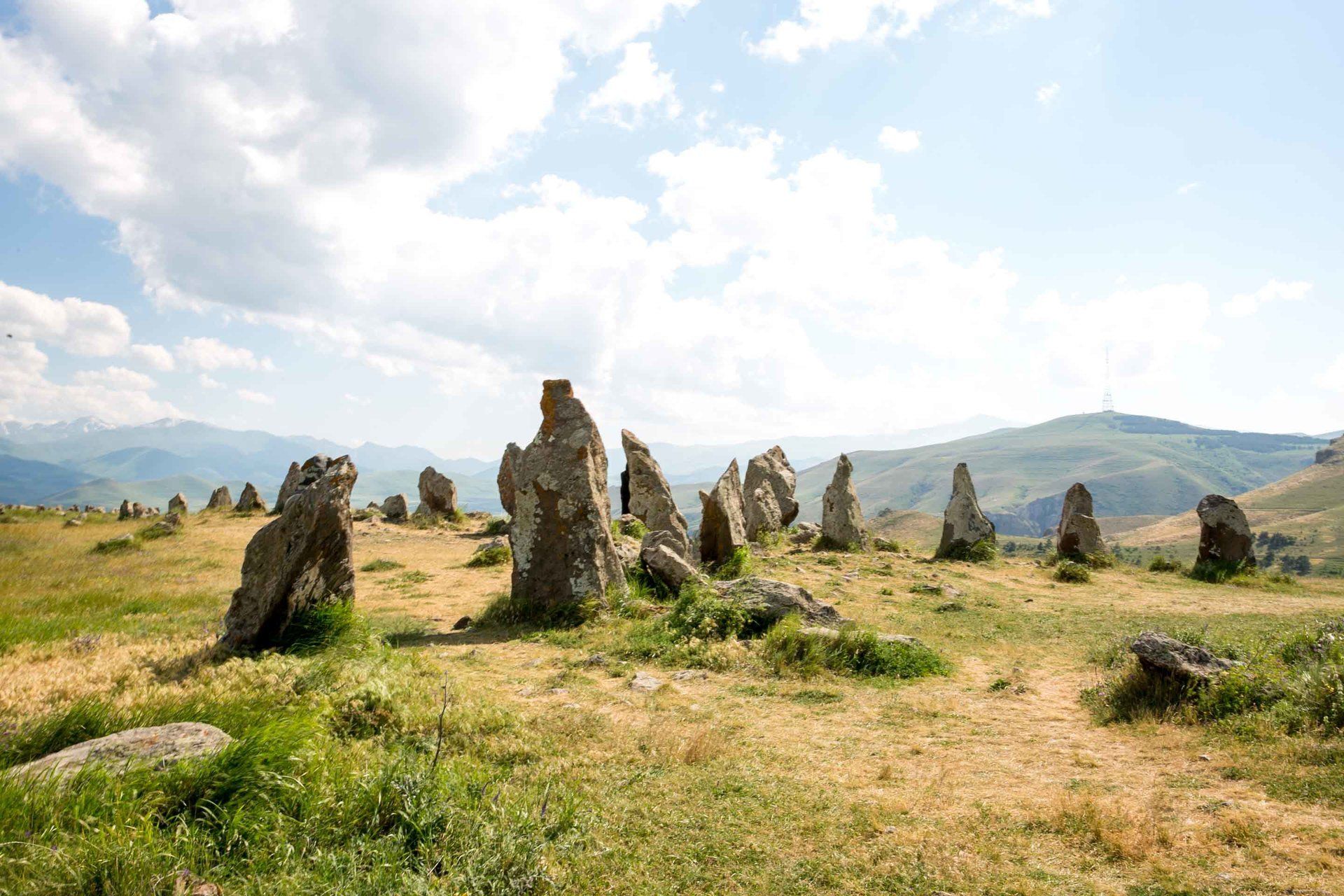What to see in Mandalay, Myanmar: Part 3 Mingun-The Unfinished Pagoda, Mingun Bell, and the Hsinbyume Pagoda
- By Thong Do
- •
- 11 Apr, 2017
- •
One of my favorite places I’ve visited in the Mandalay region was an area in Sagaing called Mingun. To get here I had to take an hour-long ferry up north on the Ayeyarwady River. There aren’t really any official ports in Mandalay but I left from an area called the Gaw Wein Jetty and the ferryboat drivers just get close to the land and then throw a plank to the land and you walk across it. Two workers are also holding a piece of wood to provide support too. It’s a quick ride to Mingun and we are told you can see river dolphins on occasion but I had no such luck. The ferryboat operators were a small family who were really nice and had very small children who were quite photogenic too.
Although a relatively small area, there is much to see here and it’s completely worth visiting. Once we arrived the first thing I noticed were ox drawn taxi carts. I’ve seen taxi carts powered by people, engines, horses, and donkeys but never by ox before. I didn’t take the ox taxi in the beginning but did at the end of the tour since we were running behind schedule. It wasn’t exactly smooth but it was quite fun and really cheap since it wasn’t that far. I didn’t have time to see everything here since I was on a tight schedule but a half-day is all you need to thoroughly enjoy this area.
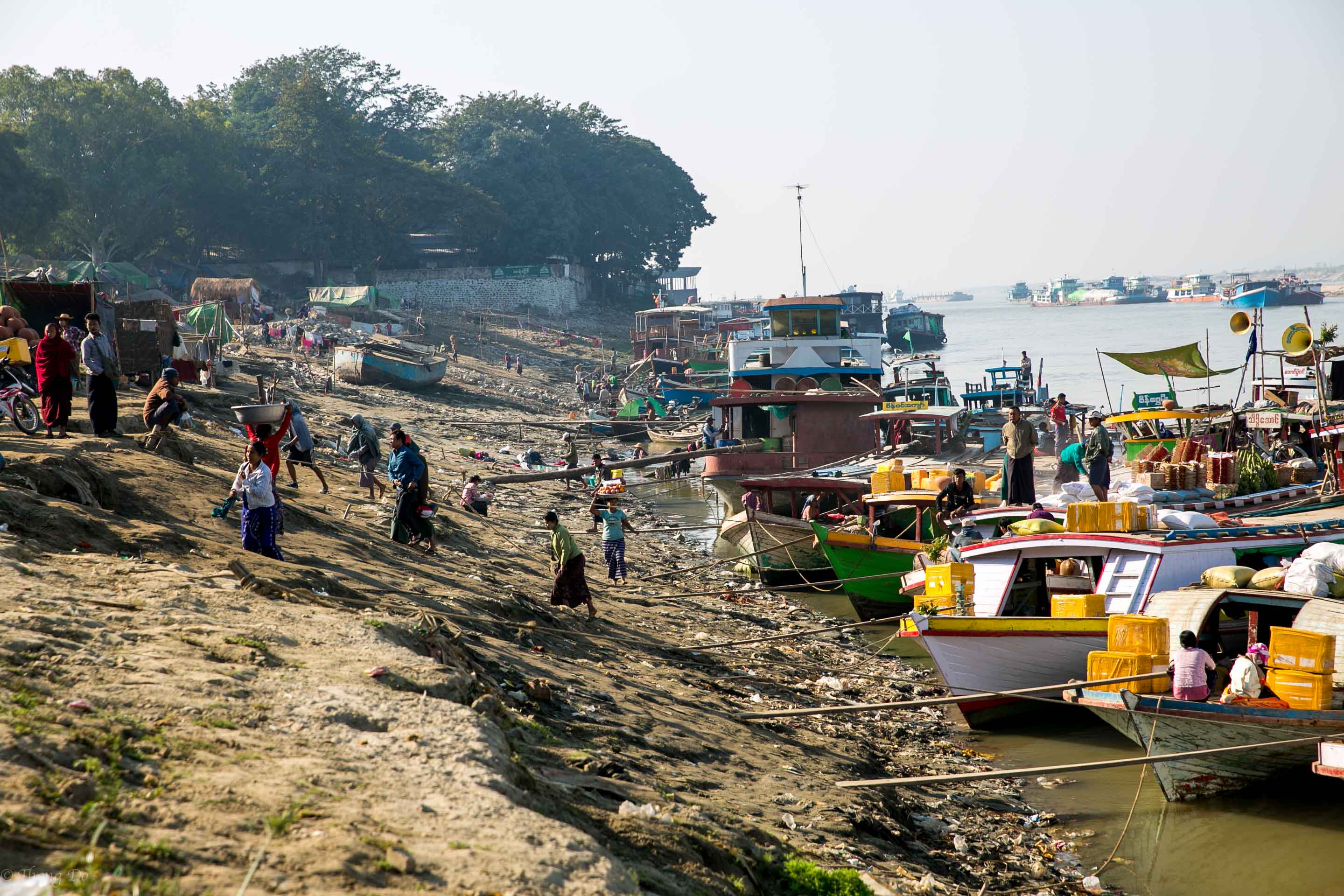

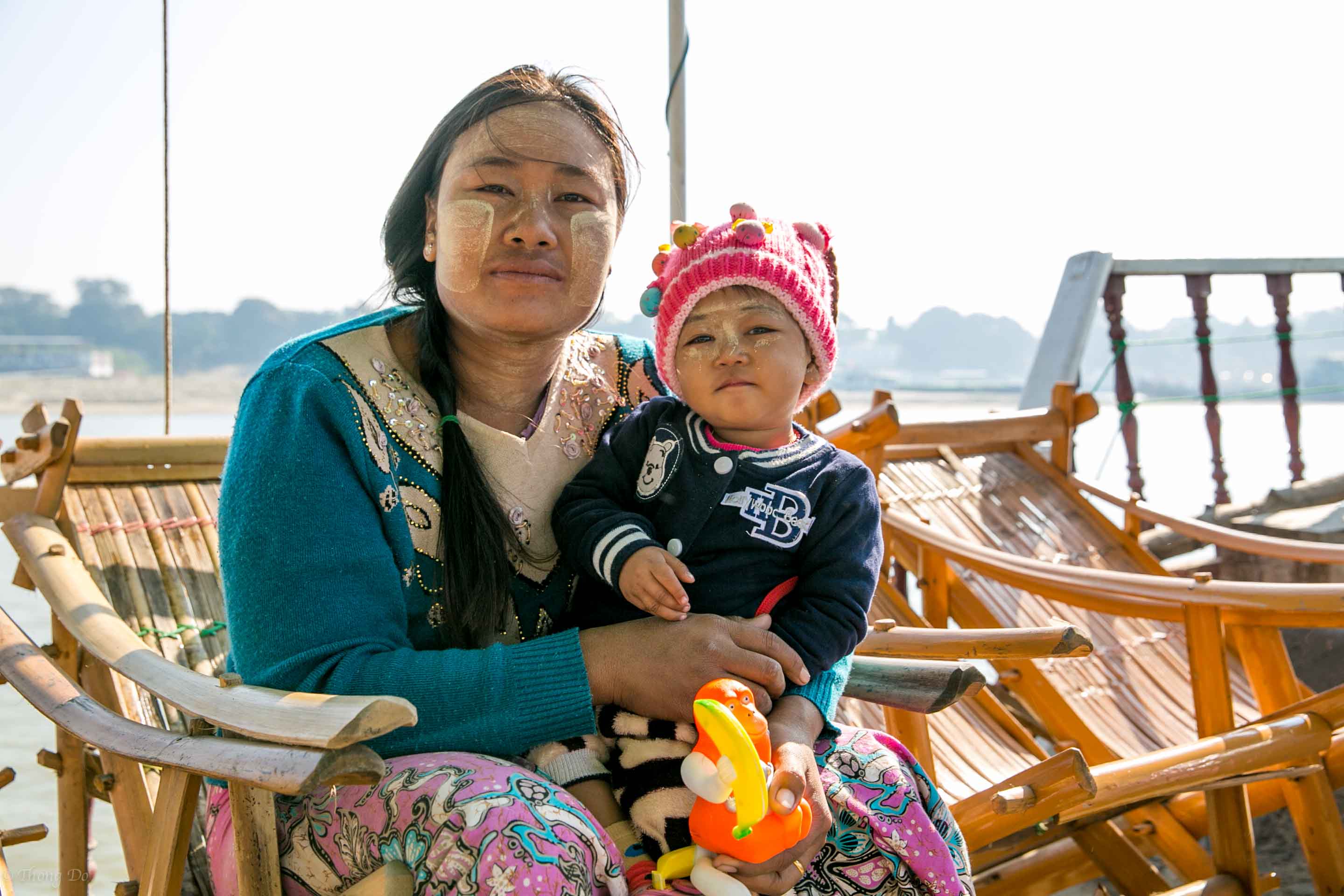
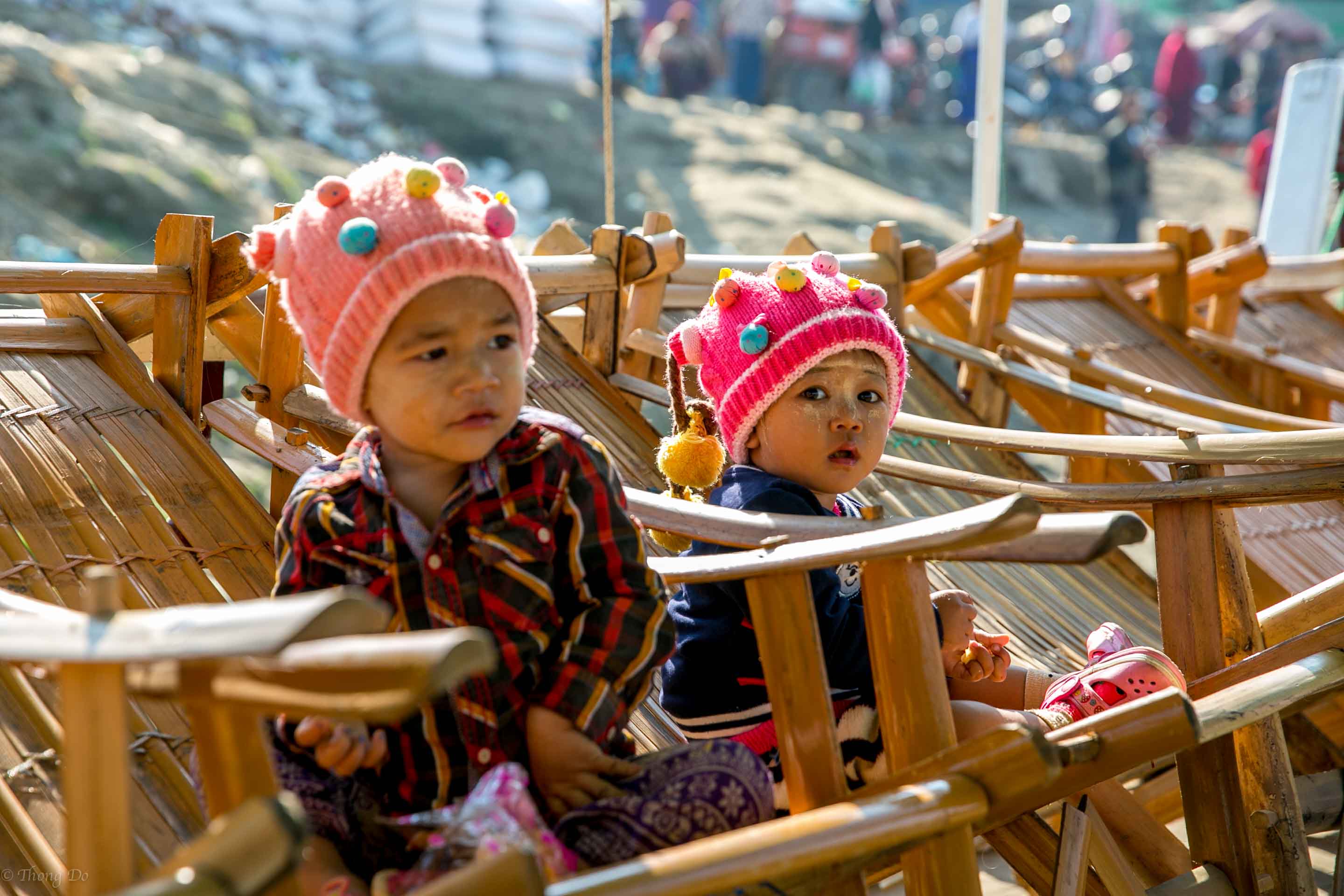
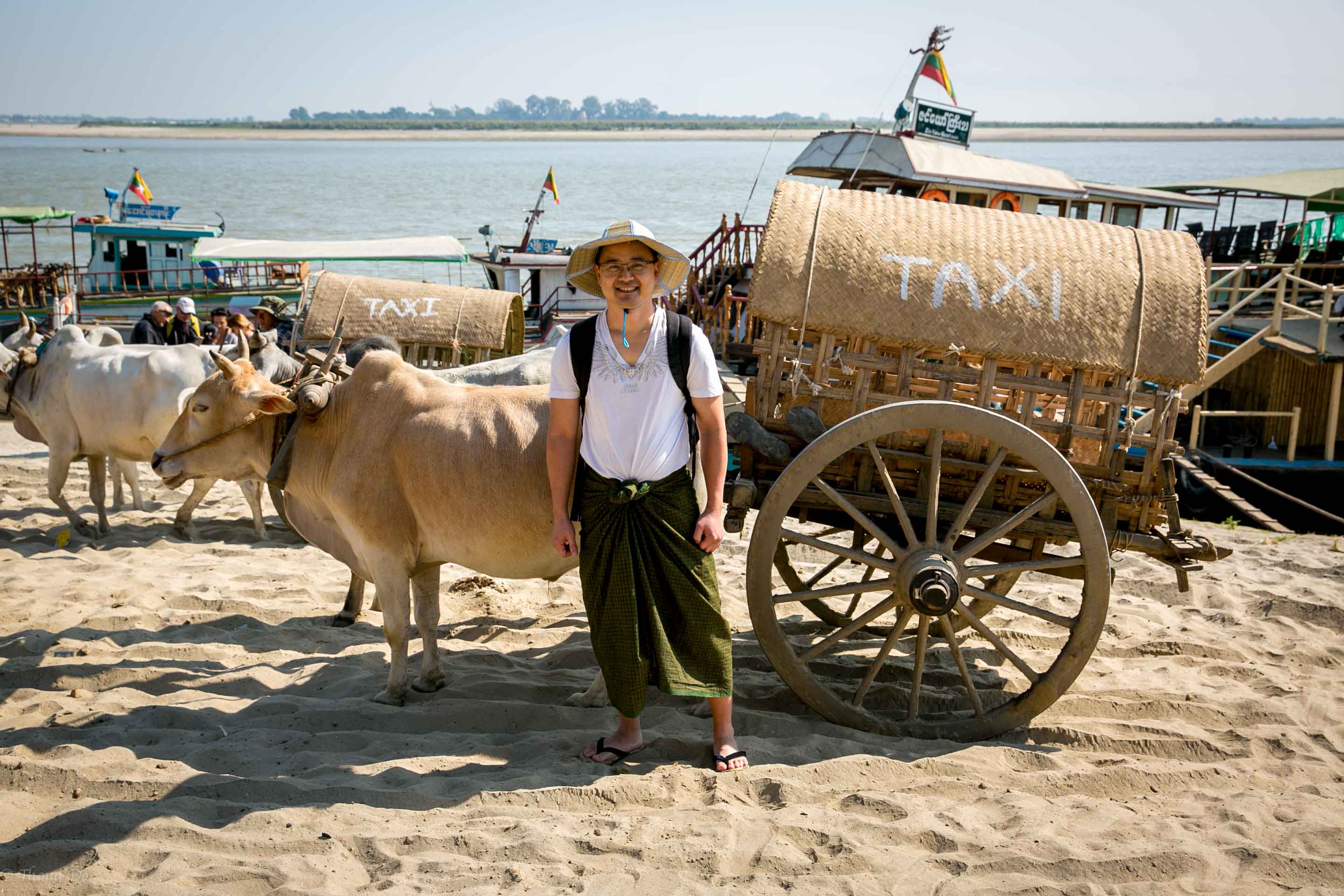
By far, the biggest attraction in the Mingun area is the Unfinished Pagoda and there’s no way you can miss this. This herculean effort was directed by King Bodawpaya in 1790 and constructed with mostly slave labor and prisoners of war. As of now, the base stands at 50 meters high and if completed would have been 150 meters tall or nearly 500 feet and rivaled the Shwedagon Pagoda in Yangon. No one really knows why the project was not completed. The financial drain and opportunity costs imposed on the state are some theories as well as bad superstitions and prophecies are others. As of now this project holds the record of being the largest pile of bricks in the world.

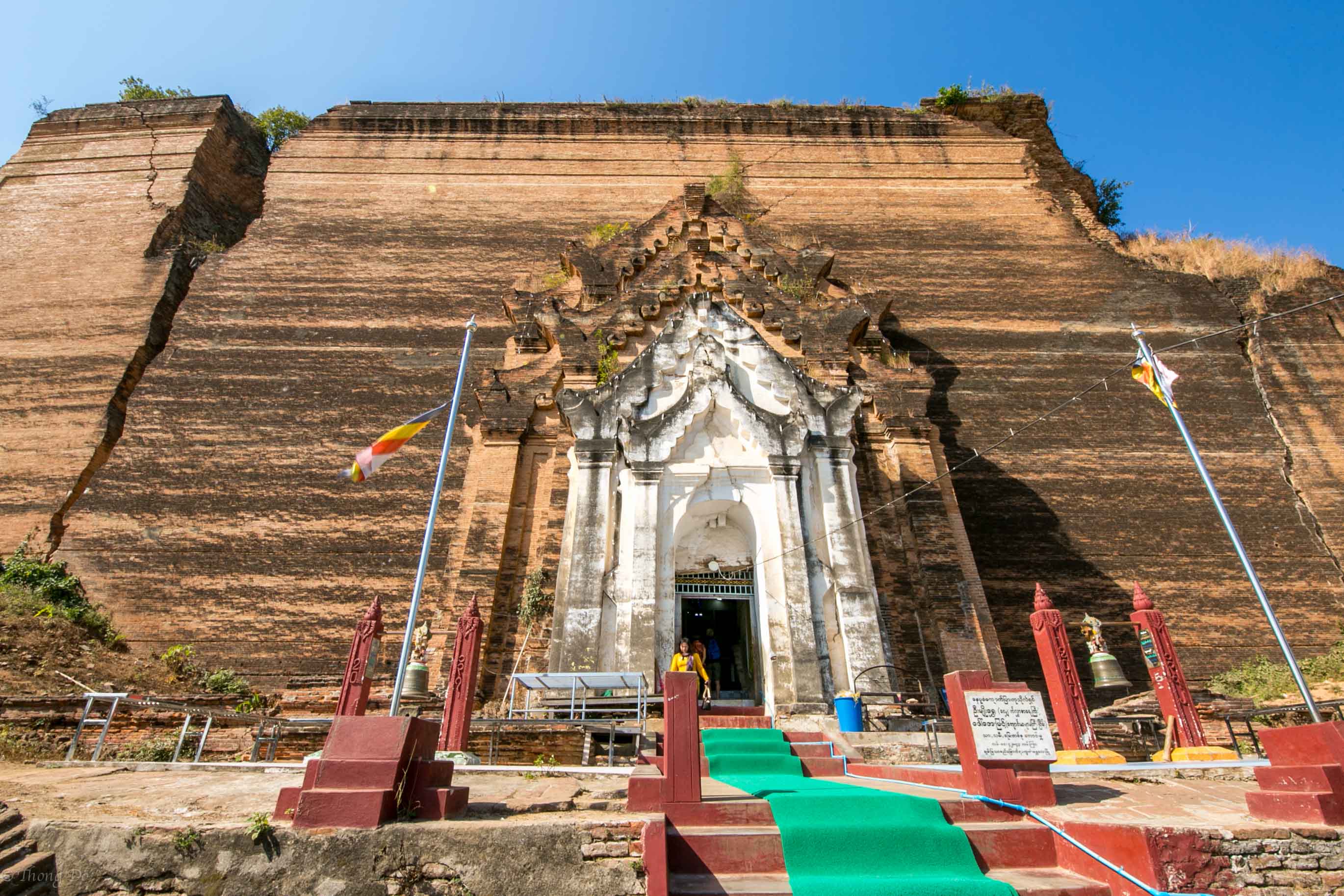
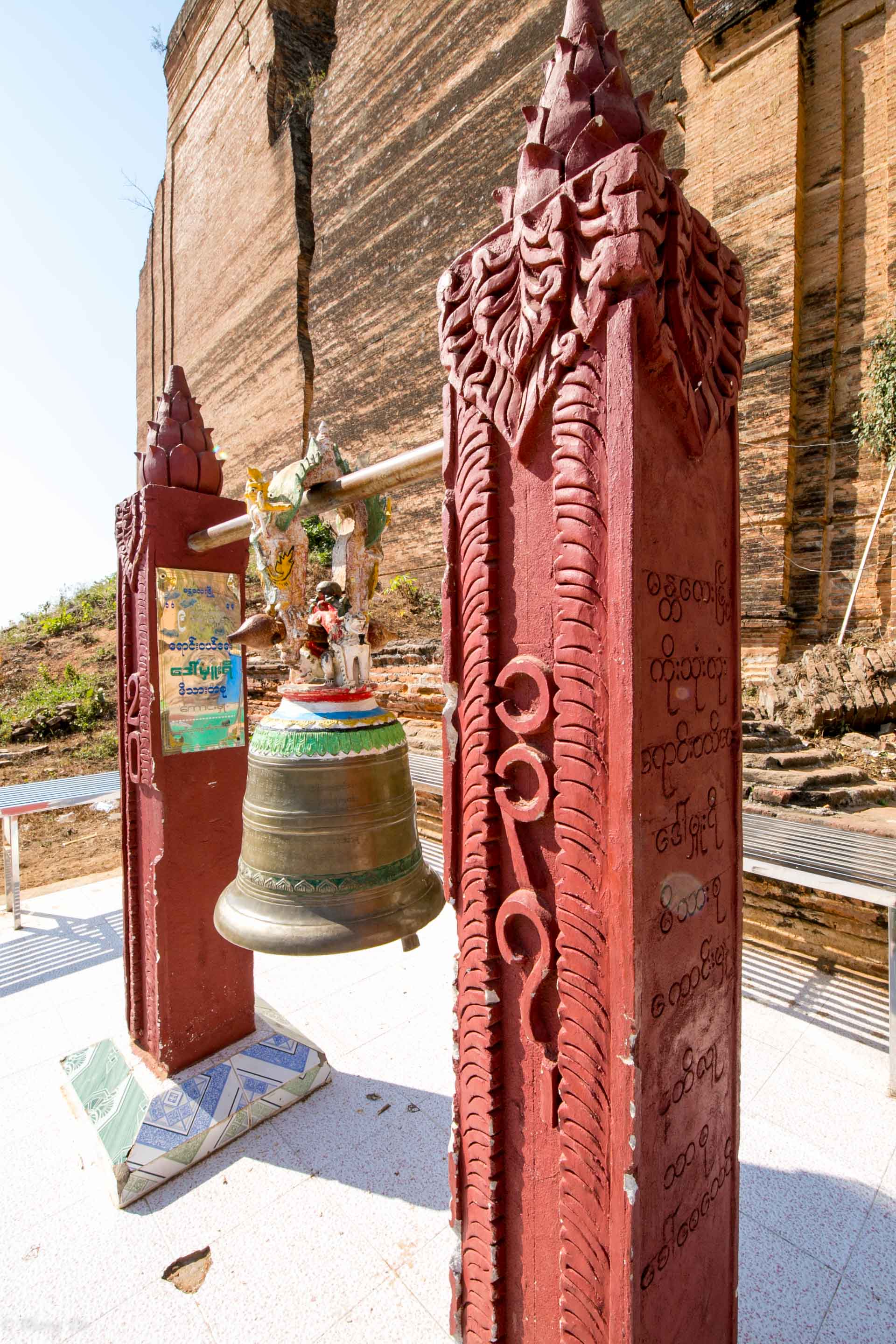
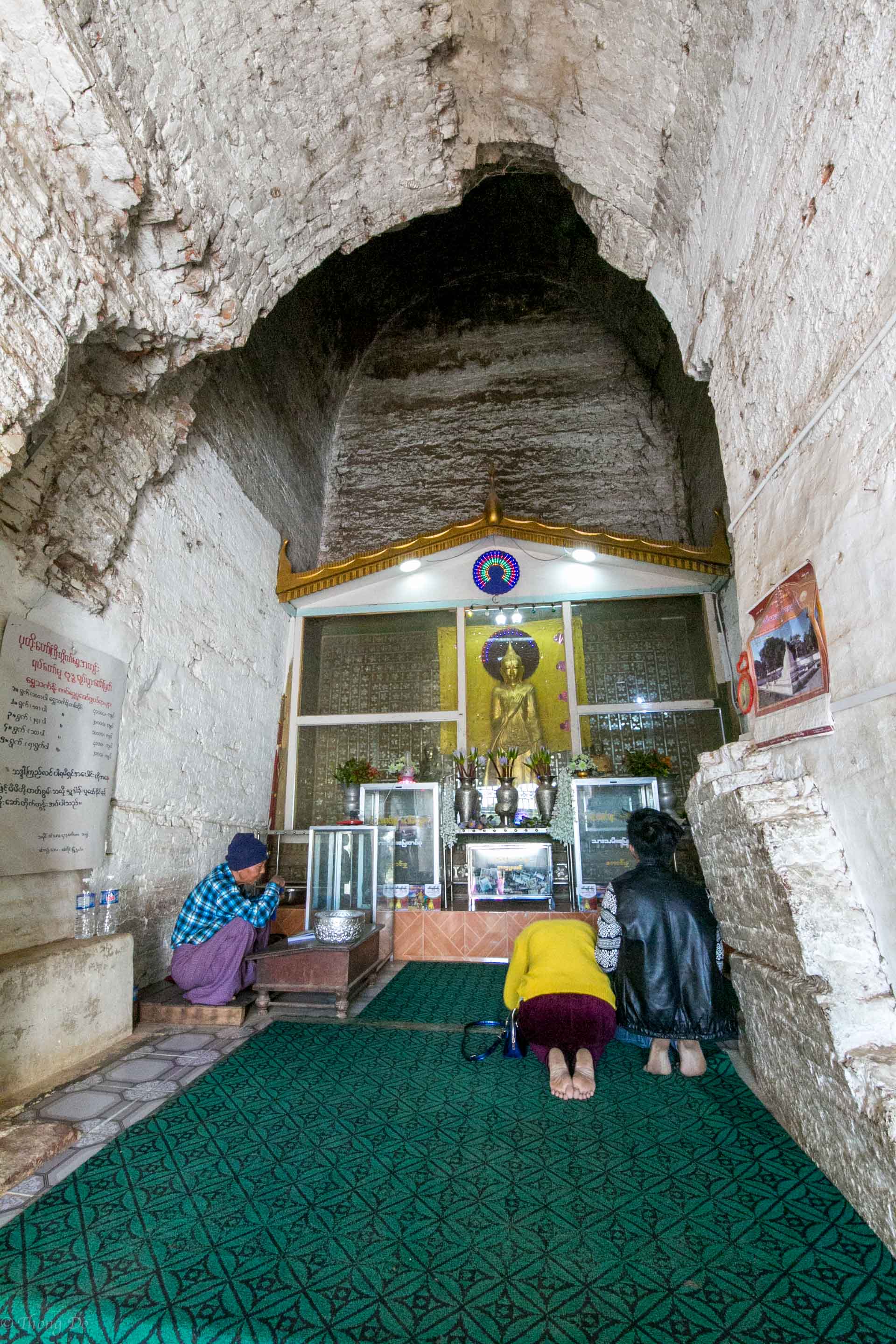
There are 4 sides to the base and each has steps leading to a portal inside the pagoda. Along the surrounding walkways you can see many of the drainage pipes in the shape of a crocodile’s head too. This is where most of the vendors hang out and sell their goods. There are obvious cracks in the pagoda as evidence of the earthquake that occurred in 1839. The main portal still has a functioning shrine inside with a Buddha inside. Although there was a monk inside when I was there I’m not sure I’d call this place a religious or spiritual center. It takes just about 10 minutes to walk around the entire Unfinished Pagoda and also off to the side of the main portal you’ll see a staircase that will take you to the top. Unfortunately, there was a metal gate preventing people from getting to the top and my tour guide said it just wasn’t safe up there so that had to close it off.
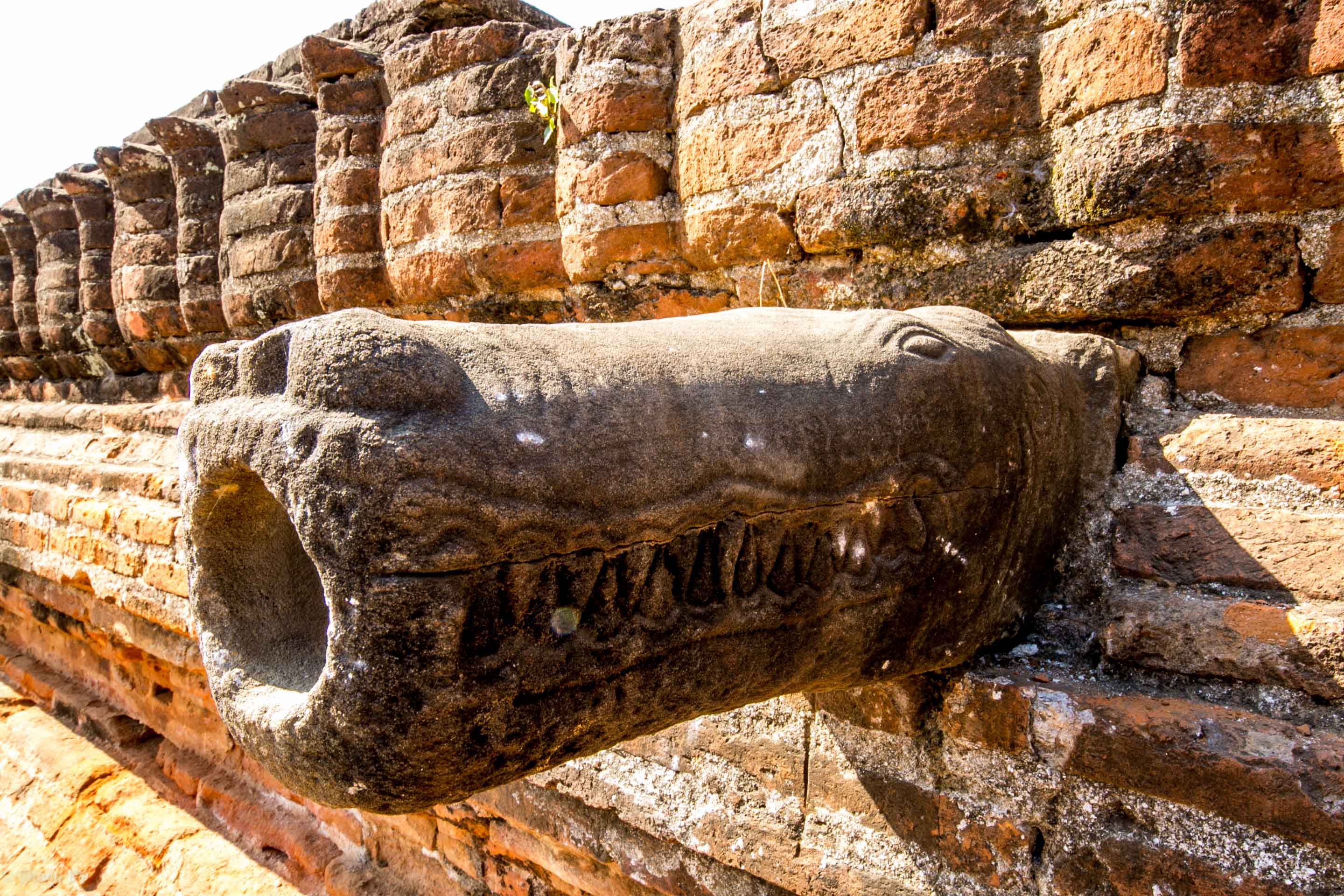
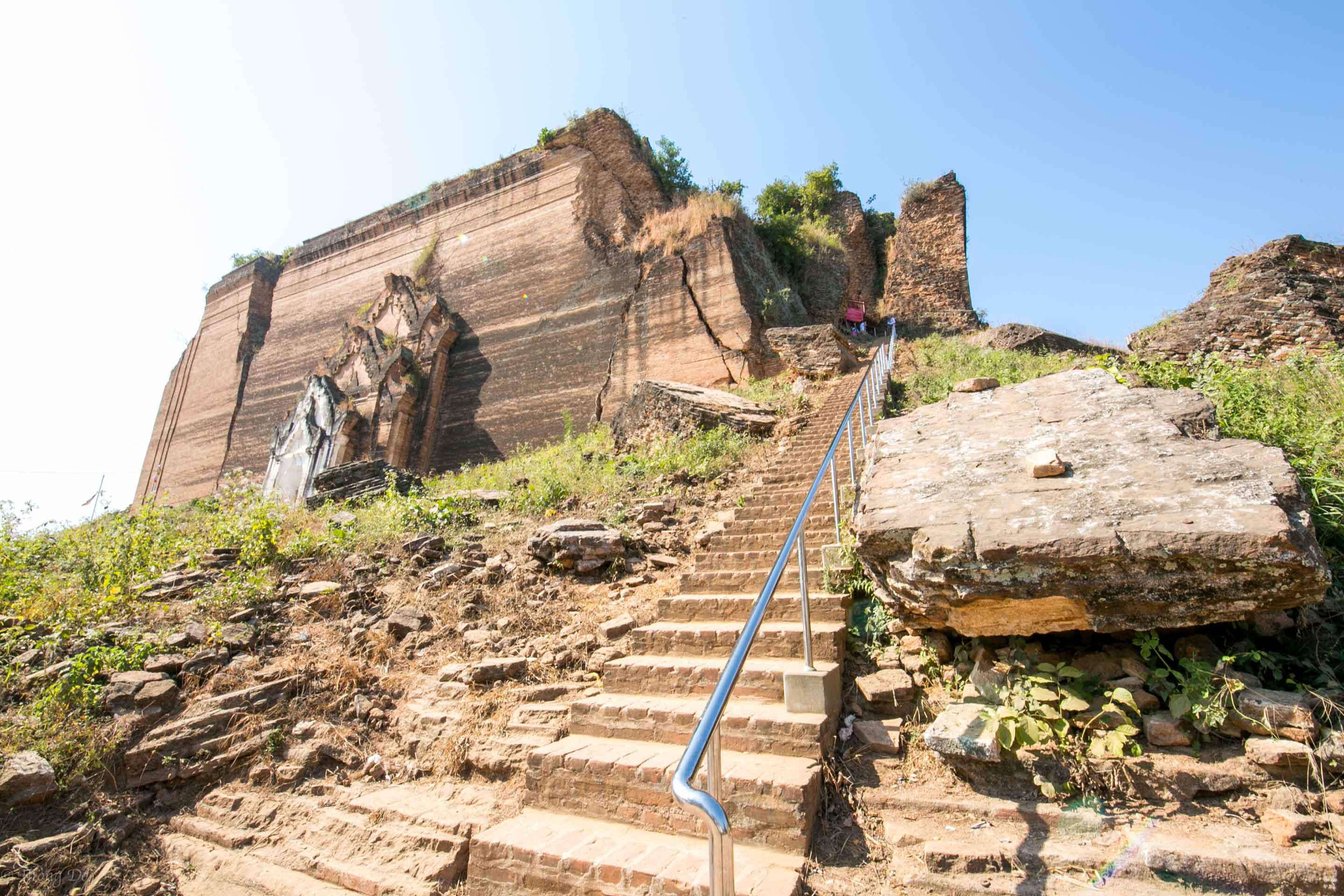
Another quick and interesting site to see in Mingun is the Mingun Bell. King Bodawpaya’s philosophy of going big or going home also applies to having a gigantic bell to go with his pagoda. Only minutes away from the Unfinished Pagoda this bell weighs in at 90,000 tons and is the second largest ringing bell in the world. It was cast in 1808 and the 1839 earthquake destroyed its support system and was grounded until it was raised in its current position in 1896. There are big pieces of wood hanging around to give the bell a good ring so give it your best shot!

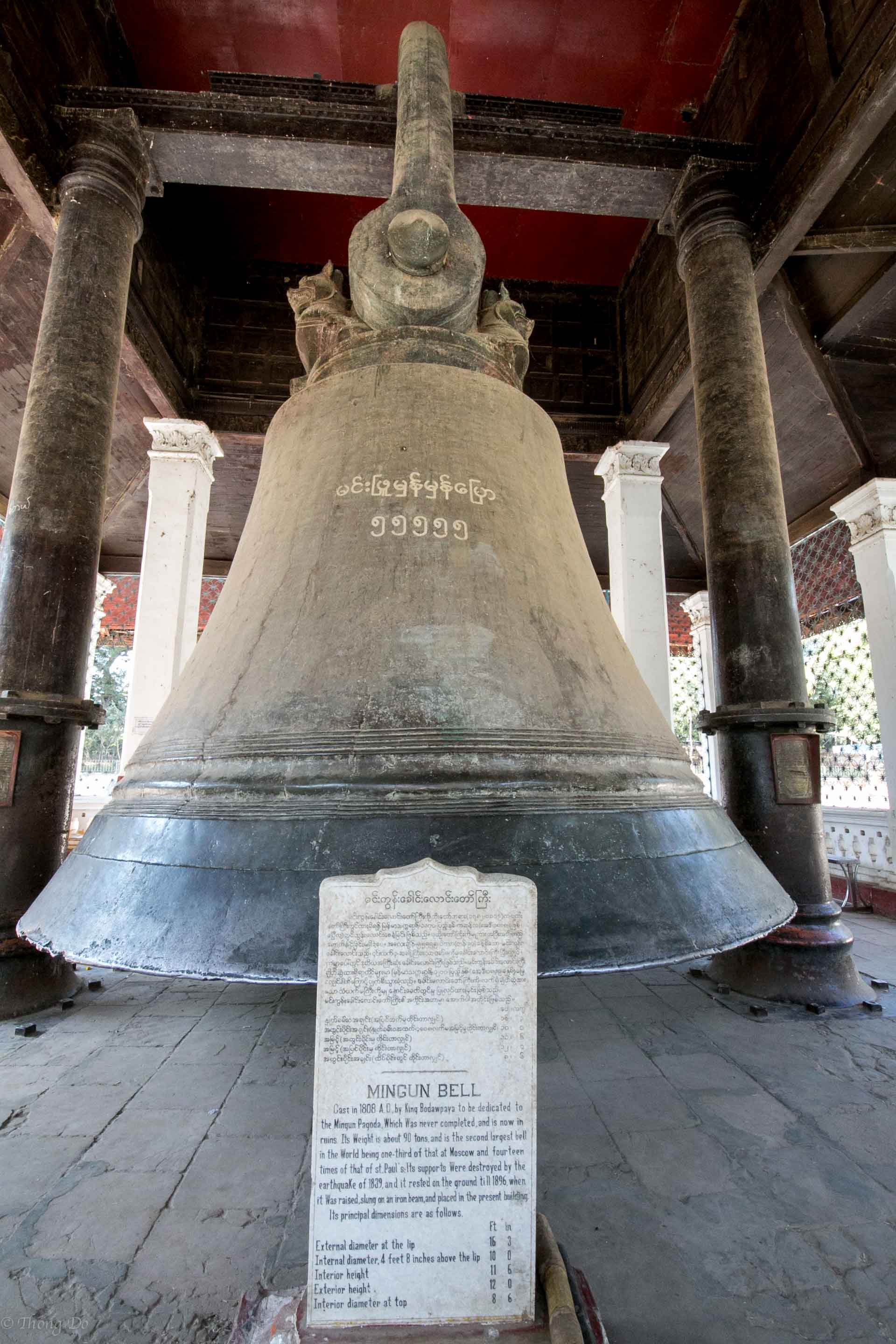
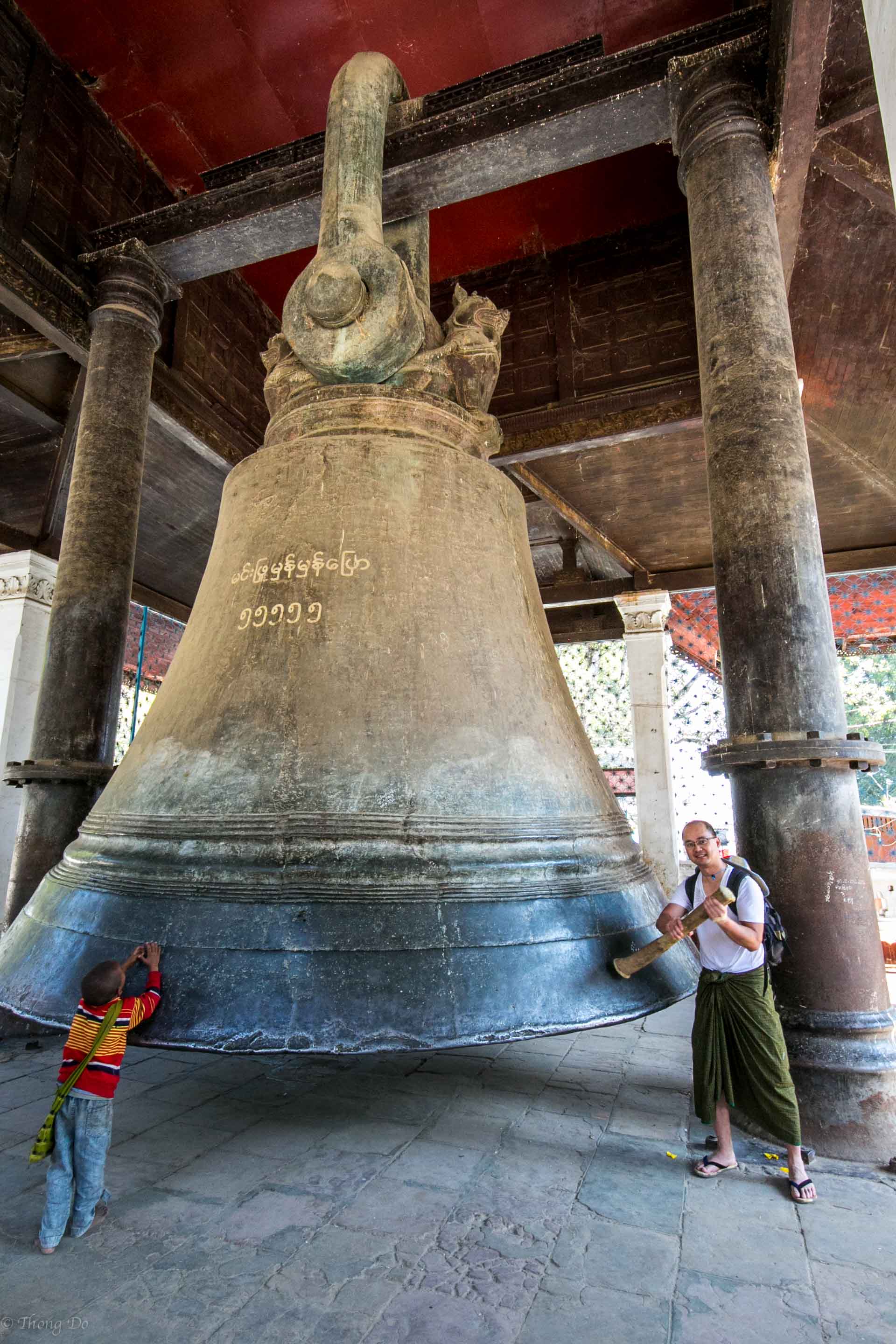
Although the Unfinished Pagoda is quite a site to see the main attraction in Mingun was the Hsinbyume Pagoda. You can’t miss this because it’s all white in color and so uniquely designed. Also known as the Mya Theindan Pagoda it was built in 1816 by Prince Bagyidaw, the successor to the throne of King Bodawpaya. The Hsinbyume Pagoda was finally completed just three years before the Prince ascended the throne in 1819 and became the King of the Kobaung dynasty. This beautiful project was dedicated to his first wife, Princess Hsinbyume, which translates as the White Elephant Princess who died during childbirth. I’m starting to see some similarities with the rulers in this area to those during the construction of the Taj Mahal. That too was built at great expense to the public and dedicated to a deceased wife.
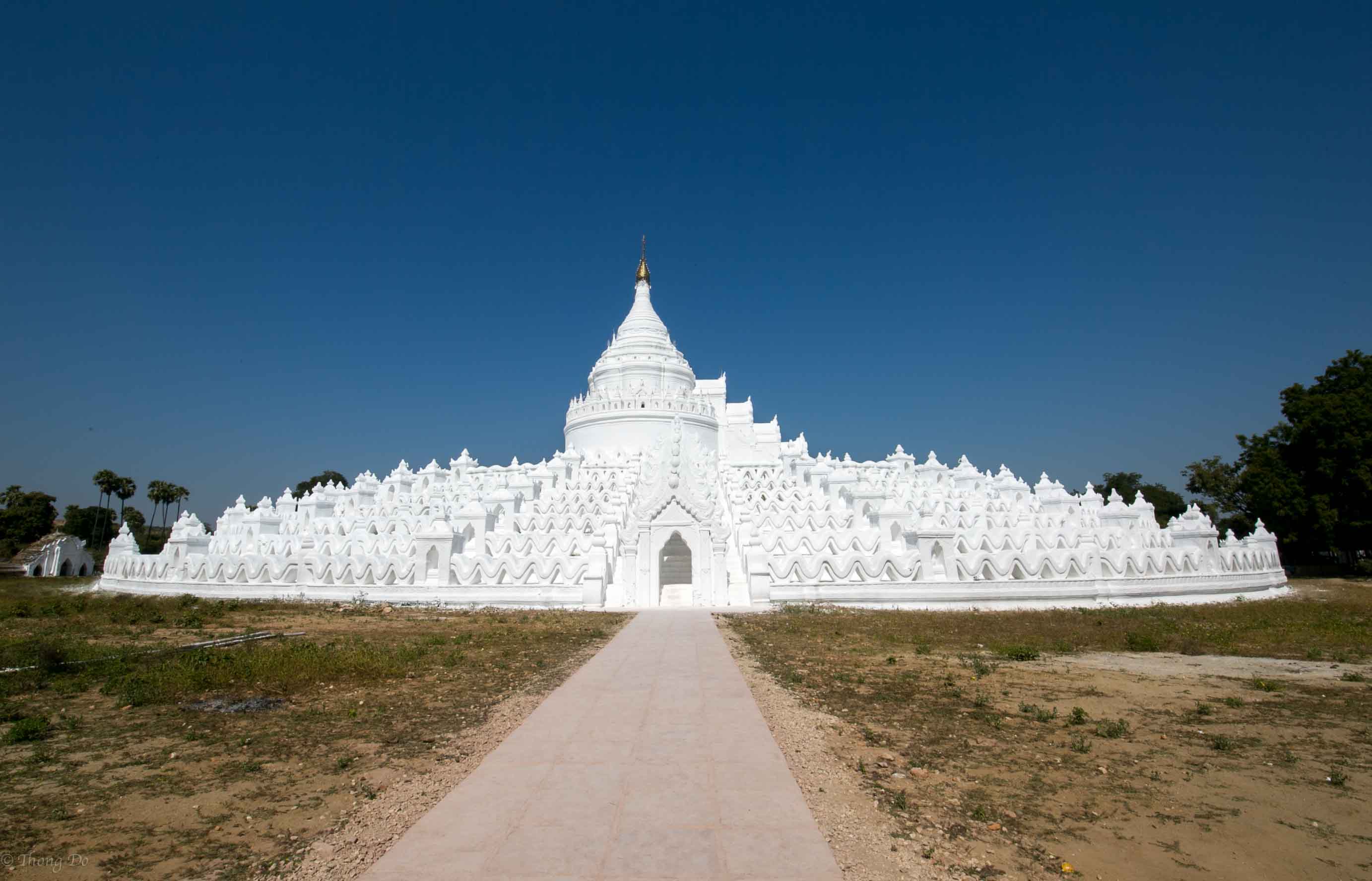
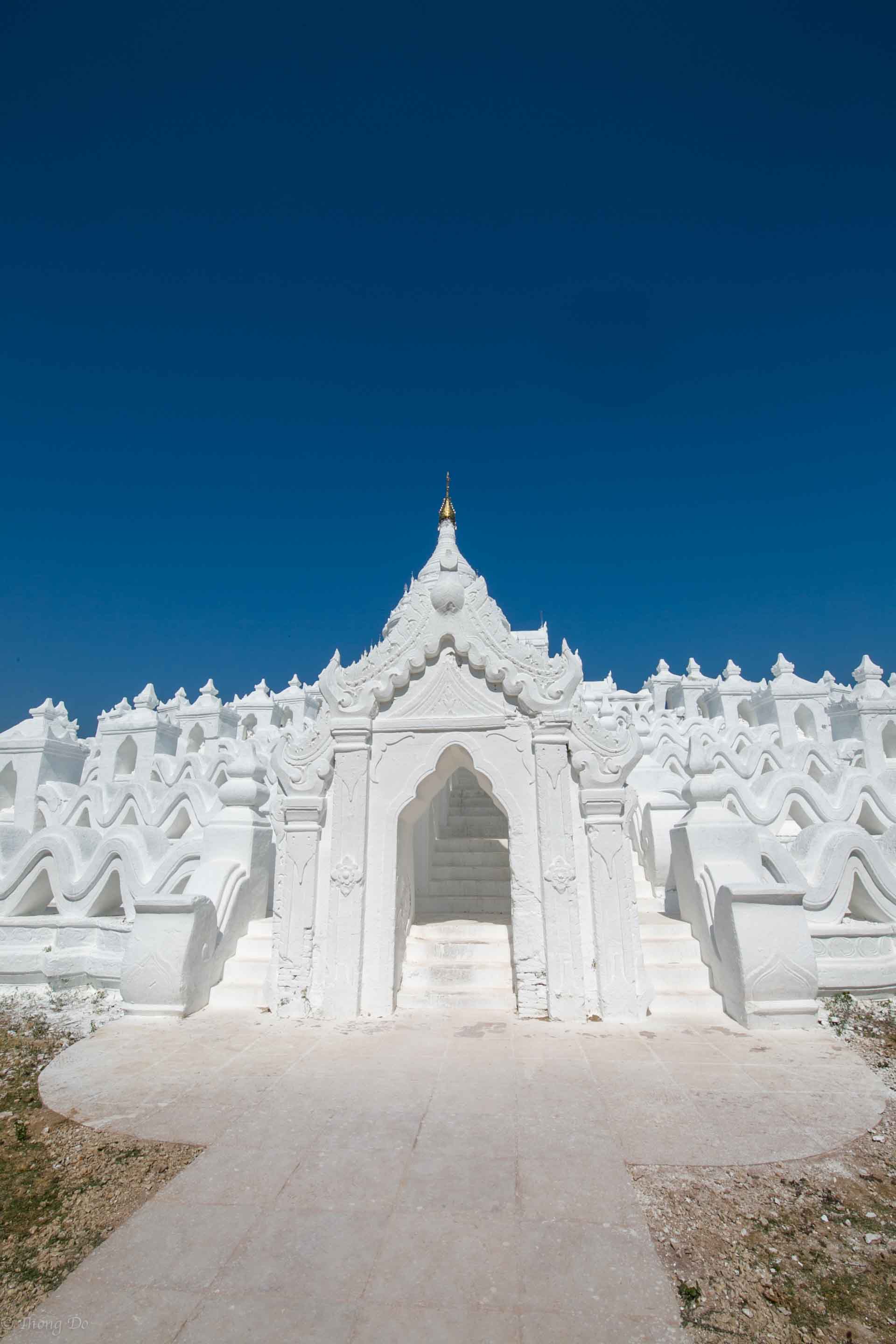
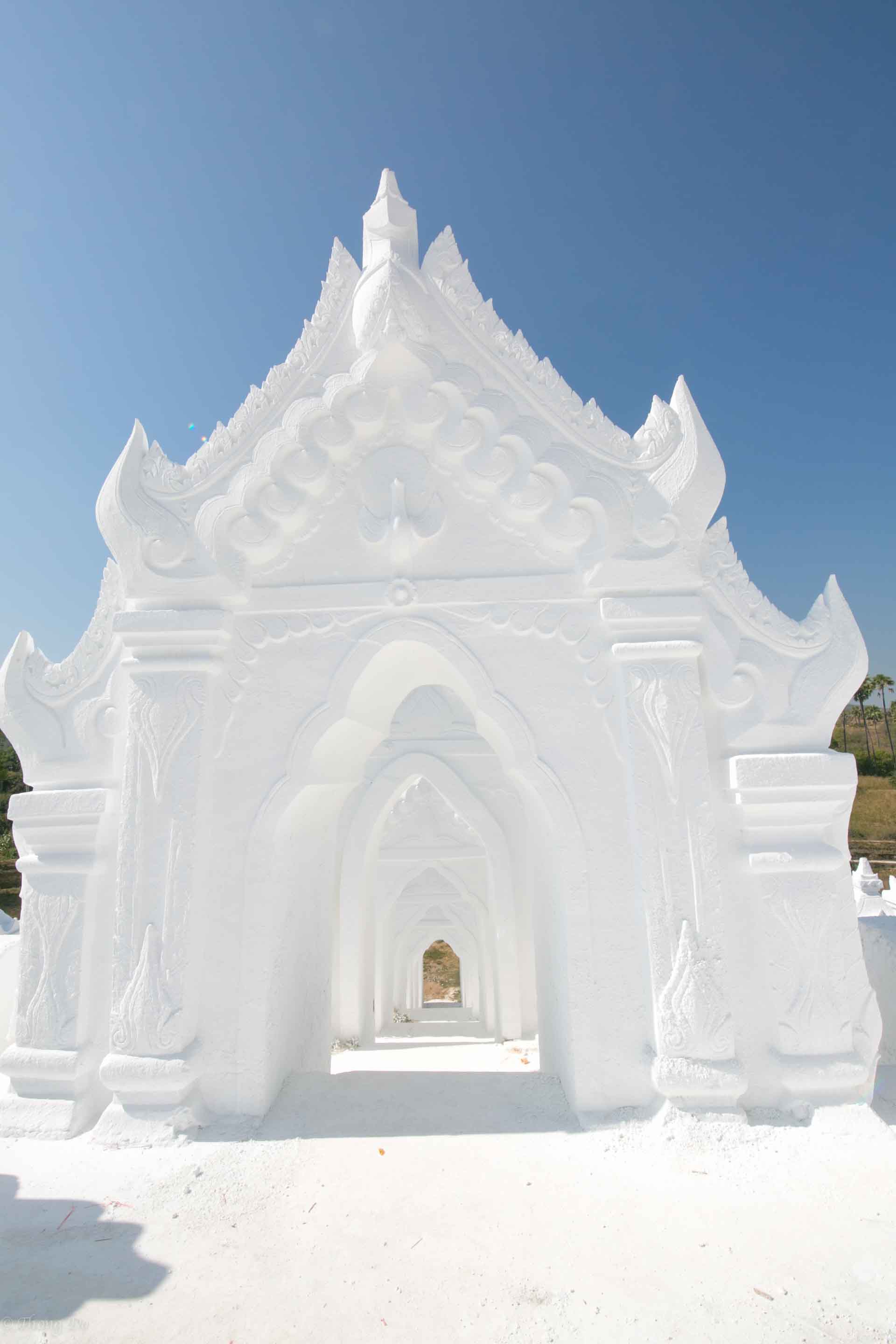

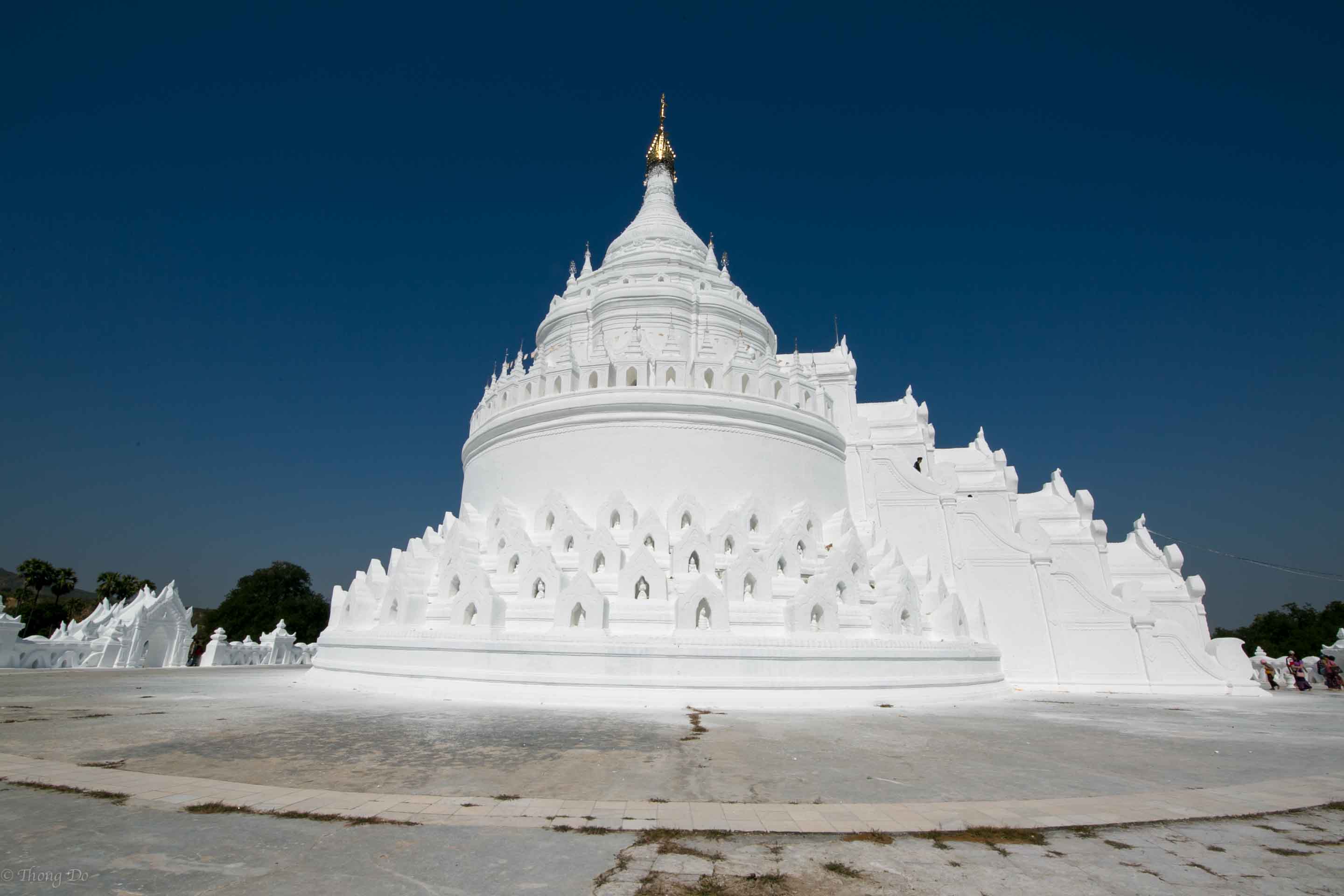
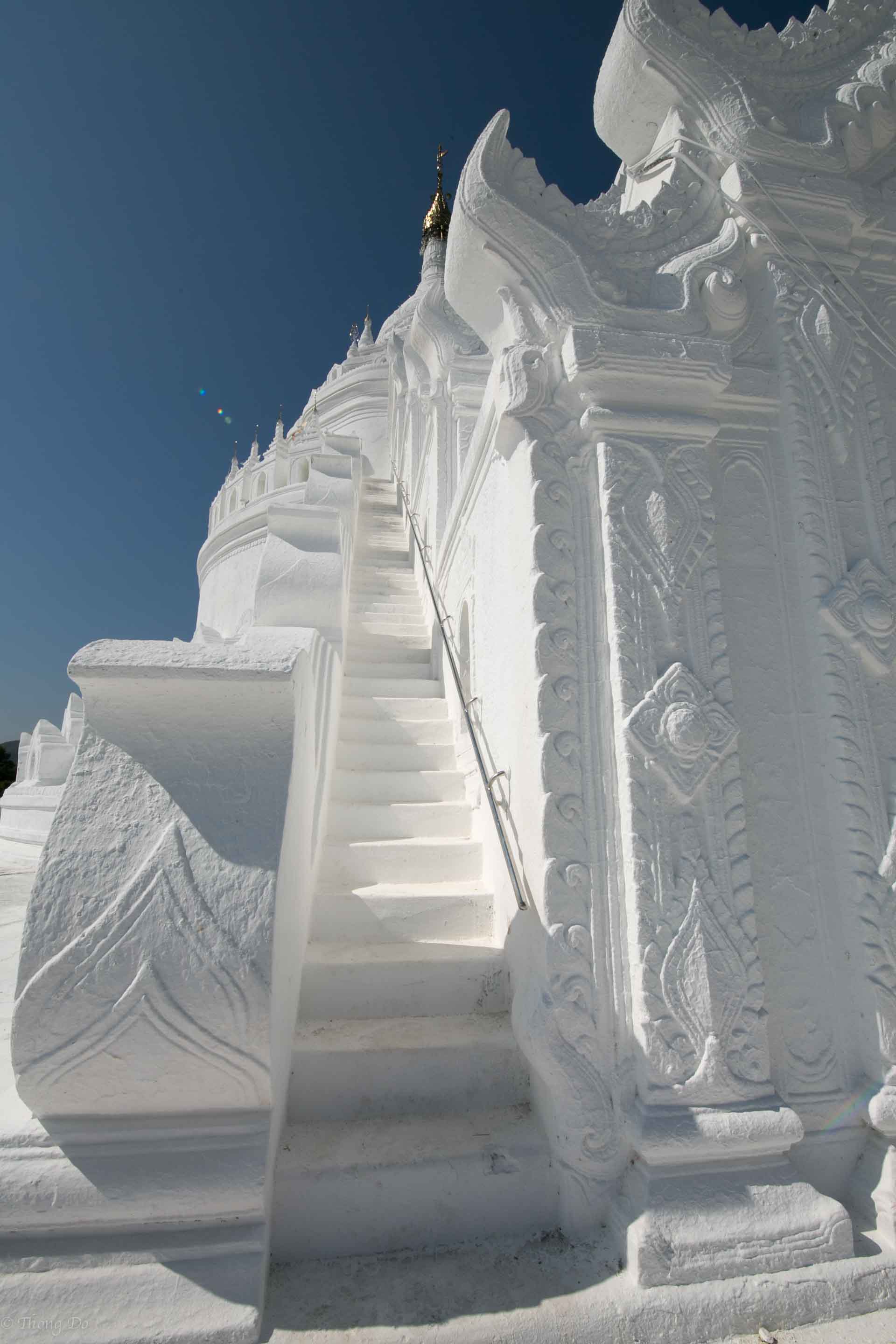
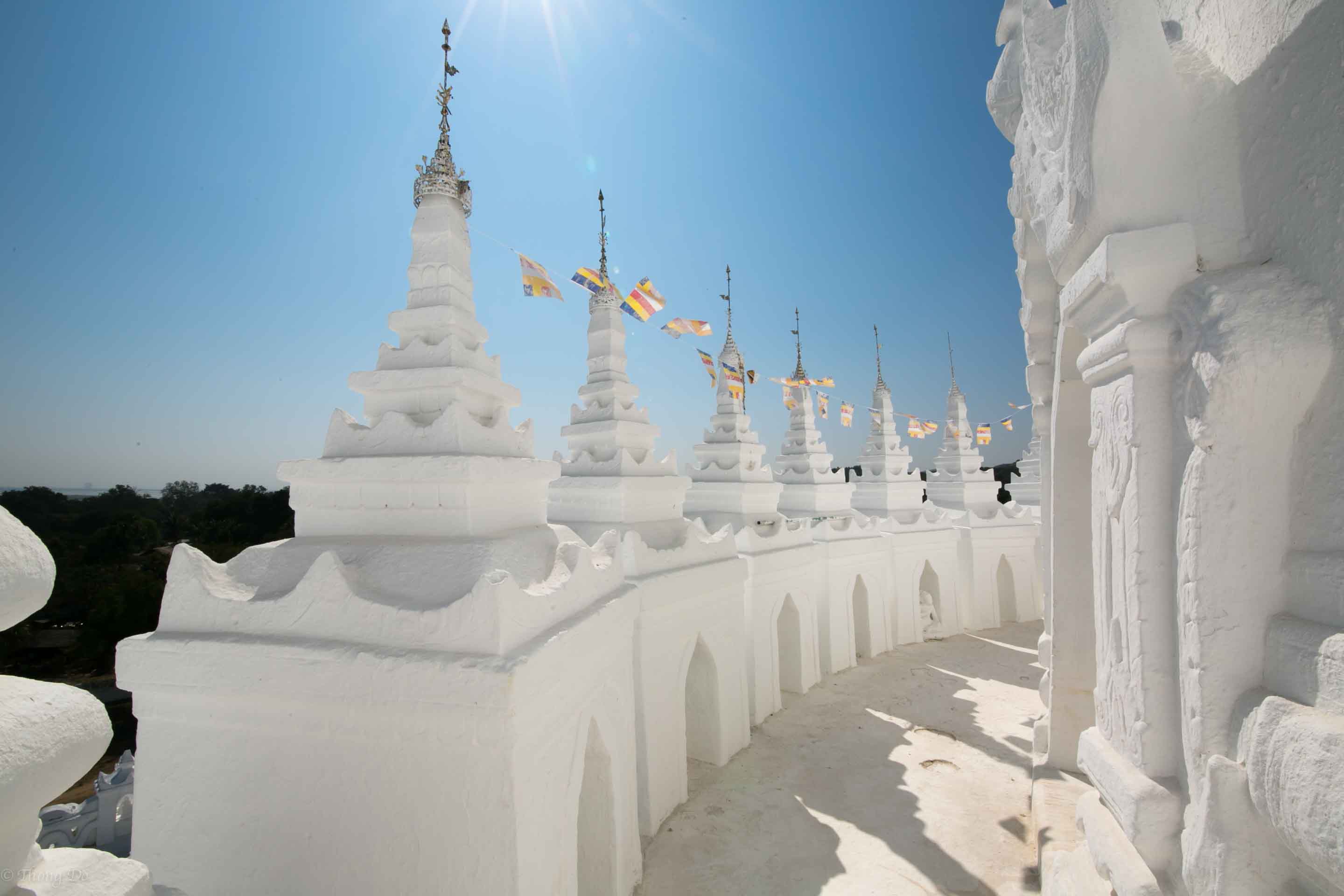
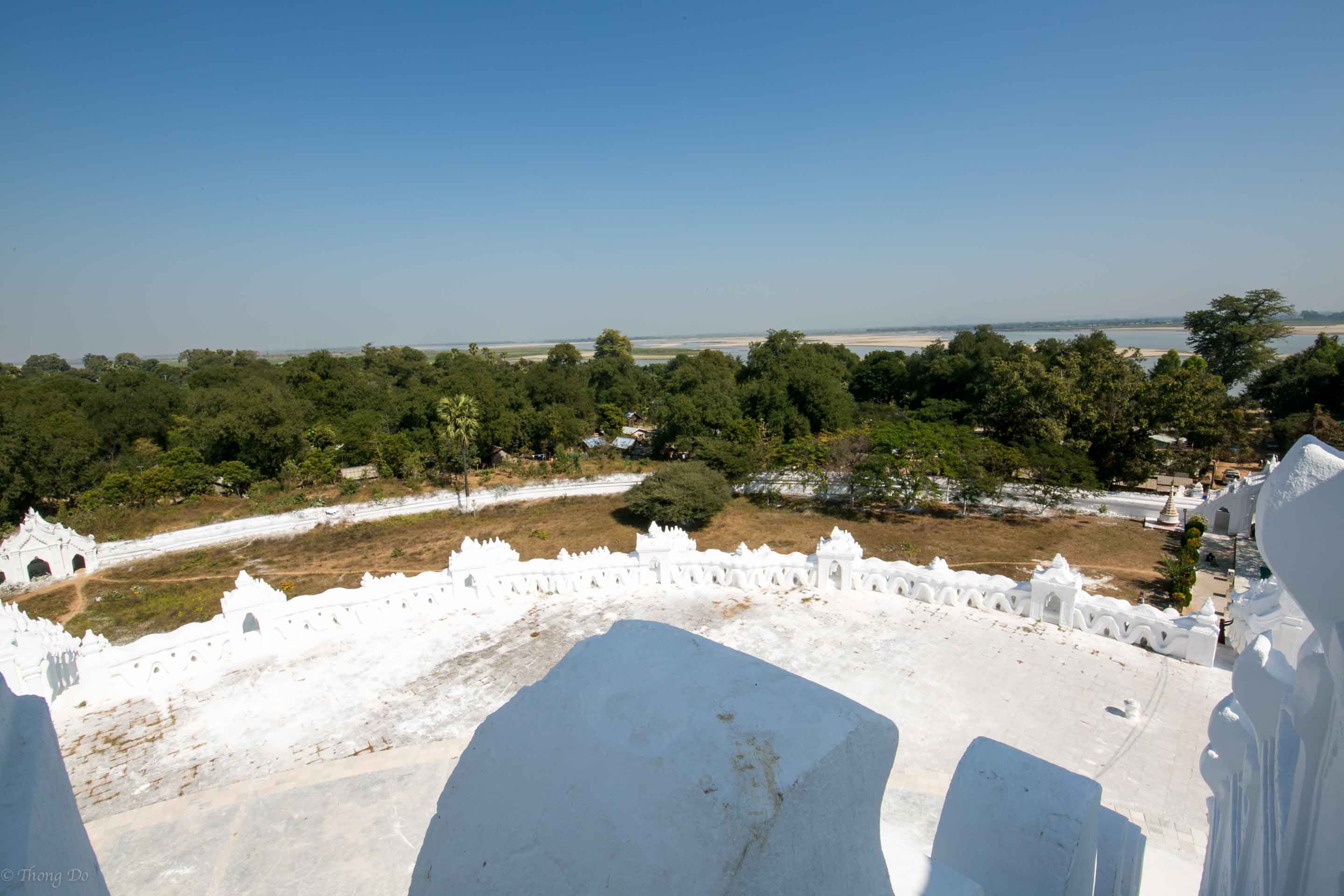
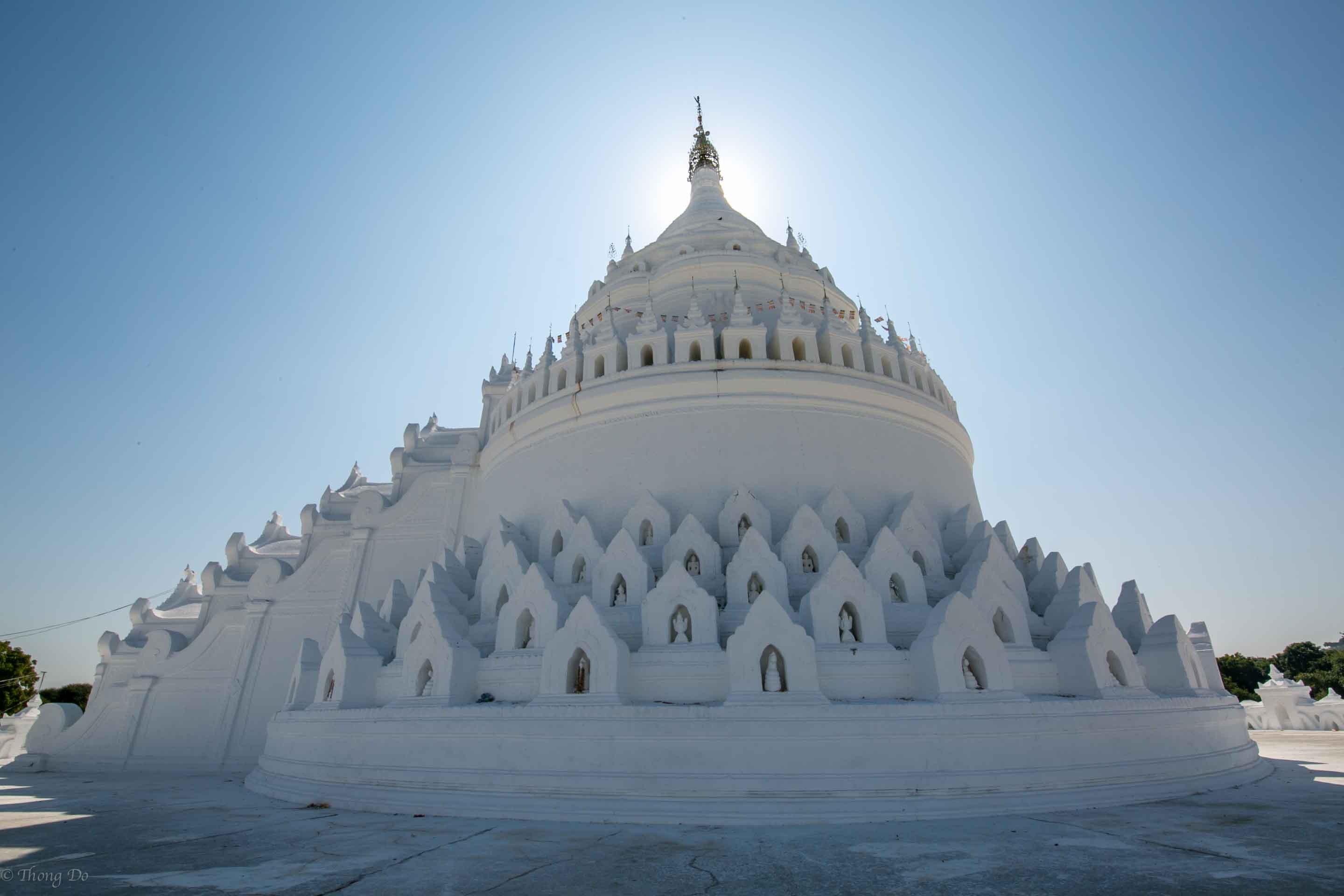
This is a religious center so remember to remove your shoes upon entering and to dress appropriately. The grounds are open during regular daylight hours and the price to enter this archaeological zone is under $5. Make sure you have a wide lens to get the entire complex in your picture frame. There are vendors selling souvenirs to food everywhere so don’t get pressured into buying anything.
Happy traveling!
